Sommelier Liquidity AMA With JP From THORChain
In this Episode, THORChain research/contributor, JP, speaks with Sommelier Cofounder, Zaki Manian, talks about talks about the vision, technical goodness, and an unprecedented 12-month vision for THORCHain.
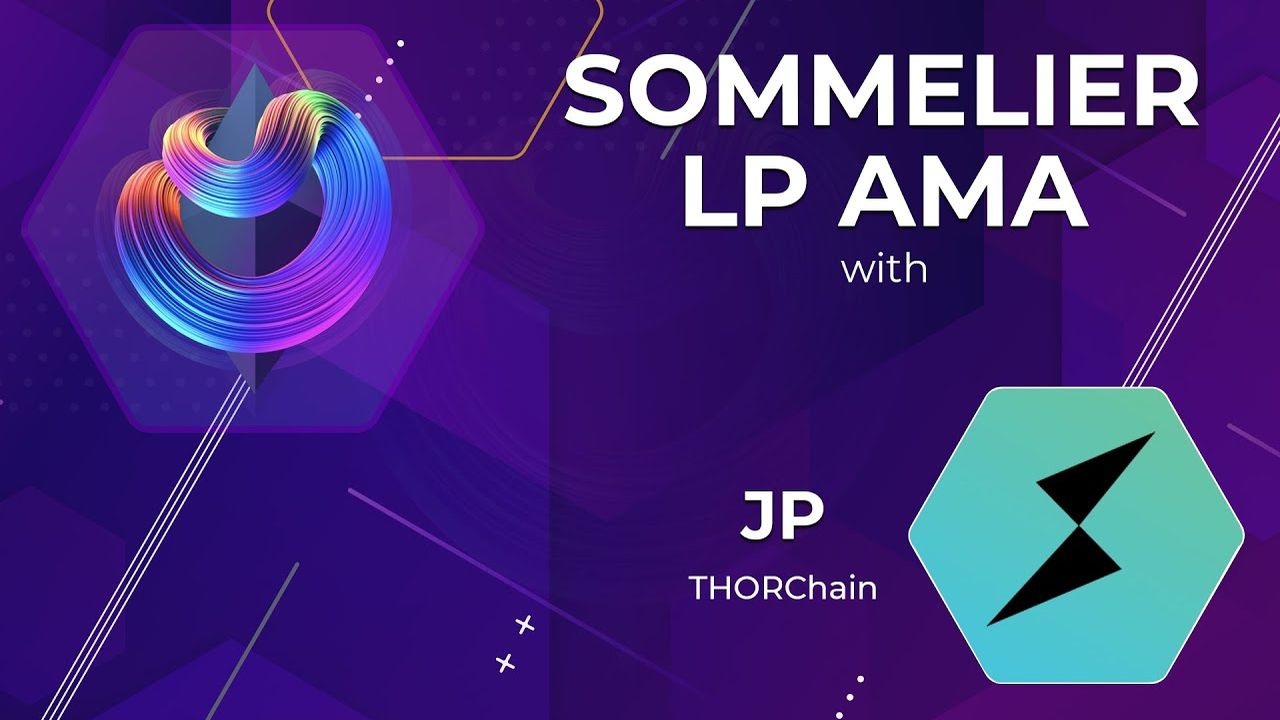
THORChain research/contributor, JP, talks about the vision, technical goodness, and an unprecedented 12-month vision
Sommelier cofounder, Zaki Manian, has a really fond memory of speaking at Web3 Summit in Berlin in 2018. Among those who approached him after his talk were team members from THORChain asking really complicated questions about Cosmos SDK, and he thought: Who are these people? Why are they asking such complicated questions? Where did they come from? says: “And little I know what THORChain would become. I guess you had the stubbornness and grit to bring the vision to life. But, THORChain is real today and it’s amazing. What is THORChain for the uninitiated?”
JP, a key researcher/contributor for THORChain obliges: “THORChain is a cross-chain liquidity protocol. Basically you can call it a cross-chain Uniswap for those familiar with Ethereum DeFi. Essentially put in one asset on one chain, and get out of that on a completely different chain.”
“Again, I want to give props,” says Zaki. “This vision sounds obvious in 2021 but you guys started working on this in 2018.”
Early days
JP recalls working on THORChain in 2018:
“Cosmos hadn’t even launched yet so the team was still trying to work out the best tech stack and it did change a bit until 2019, but early on it was always about Cosmos, MPC, and liquidity pools. And that’s never changed. And, that was even a variety of Uniswap so the team had to derive the liquidity formula from first principles and that’s why it’s different to most of what you see today.”
Zaki says: “I actually didn’t know this, or I didn’t remember this. So, what is the liquidity formula on THORChain?”
JP explains: “It doesn’t use an invariant like a bit like your typical constant function market maker. The whole idea of using an invariant didn’t come out until, well the Telex post on Reddit which then Hayden and the Uniswap team implemented and unveiled at the Devcon4 in Ukraine later in 2018.
“But, prior to that the only example of liquidity pools was Bancor and they launched in late 2017 and early 2018. That was the only DeFi liquidity pool protocol. So, I guess the team looked at that and they looked at deriving it. Basically around the idea that if you put in an asset on one side you get out the asset on the other, just using the ratio after the trade. And, you can actually derive it as though it had an invariant, but it doesn’t have an invariant -- what you call K in the XYK formula.
“But, the biggest question the team had to solve later that year was what fees to use. And, the idea of using fixed-rate fees, 30 basis points, was the first and most obvious thing, but the team realized that having fixed-rate fees doesn’t allow a market of demand for liquidity to arise. So on Ethereum if you want your transaction to go through you can either pay miners to push your transaction through or you just pay more gas. But, the idea is to extract that value, but instead of miners getting that, the idea is that people are going to compete but their fees when they compete with each other are going to liquidity providers. So, that’s the origin of the slip-based fee. So, the more aggressive you want liquidity and the more demanding you are of the liquidity pools than the higher fees that you pay. And, instead of those fees going to miners or validators, it goes into the liquidity pool for LPs, so that’s why slip-based fees and why THORChain’s formula.”
The THORChain mission
Zaki zeros in on what’s unique about THORChain, he says: “THORChain is bringing DeFi to assets that don’t have their own native DeFi. I think that’s the summary of the mission of THORChain. Would you agree with that?”
JP agress and explains:
“Yeah, it actually works best on dumb chains. And, throwing it out lightly, dumb chains like LItecoin, Bitcoin, Bitcoin Cash, etc that they can’t really do much because they’re strictly limited in scope and complexity. So the most completed bridge that THORChain is connected to today is the Ethereum bridge. And, a lot of the nuances and edge cases that have come about over the past three months of testing in the wild and with real money on real funds is coming from Ethereum.
“The other chains are actually quite easy, then you have things like UTXOs, which are easier to handle than accounts sequence numbers or nonces.You can use child pace or parent. So you can consume a pending output as the child of a new input, so you don’t have stuck transactions like you have on Ethereum. So, if you broadcast a transaction at a specific nonce, with a low gas rate, every other transaction is basically blocked. So, this is an edge case that THORChain has to use a bit of brute force to solve and it’s not very elegant at the moment. But on Bitcoin, Bitcoin cash, etcetera, it’s really simple. Just spend the pending UTXO server and it’s quite easy. Even ERC20s are a nightmare to deal with on Ethereum. THORChain actually has a router, a smart contract that handles the deposits of these ERC20 tokens -- and actually handles Ethereum differently to ERC20s, but anyway. I’d actually gone down a bit of a rabbit hole there.”
Zaki observes: “You guys are living the multichain vision really well. How does being a liquidity provider differ in different ecosystems? We want to bring the finest of liquidity and THORChain is an excellent place to bring your liquidity. Want to walk us through what the experience of being a liquidity provider is. You know, I have some Bitcoin, I have some Monero, I have some Litecoin. I want to be a liquidity provider on THORChain how do I do that?
But first, more on how THORChain works
Before drilling in, JP observes that THORChain is able to connect users to two different chains at the same time and it doesn’t peg or wrap assets.
“That is an absolute principle of THORChain. It will never peg or wrap assets because it doesn’t adequately secure pegged or wrapped assets because having pegged wrapped assets the only way to build a security budget is by charging demurrage or redemption fees. And, heaven forbid charging mint fees because you’ll never get anyone onboarding. But the typical way is to charge demurrage, which means fees in transit or redemption fees. And both of those, we struggled to understand how you can maintain enough of a moat to guard against thwarting those redemption or demurrage fees.
“So, as a result, pegging your wrapping protocols are very difficult because they don’t really have a viable, long-term security budget. However, as someone on Twitter so eloquently summarized: THORChain is able to have a really big security budget and today 20% of its income is derived from fees because it co-mingles decentralized custody of assets with on-chain Defi.”
So, liquidity, anyway that was a little aside. But, the problem with abstracting user balances on different chains is you need to logically centralize them and that’s done in the THORChain state machine. So, it’s aware of your balance on different chains and what balances are attributed to you. So at the end of whatever you need to make your transactions.”
Let’s talk about providing liquidity
Zaki thinks this is a beautiful idea and digs in:
“So, in THORChain, I have Zaki’s balance on THORChain. And, my balance could have Bitcoin, but it’s not wrapped to Bitcoin that is available on THORChain, but it is a Bitcoin balance that is in the decentralized custodian -- but on the Bitcoin chain. And, I have a Litecoin balance that’s the same. And, the only sort of asset that is transacted on the THORChain chain is RUNE.”
JP says that’s correct and explains:
“Basically, you’ll have to make two transactions and you’ve got to link them together because liquidity providers have to provide 50% RUNE and 50% ASA, because THORChain security model is that it couples the value of ASA with the value of the RUNE in its pools and then all it tries to do is make sure that the bonded amount of RUNE for nodes, which is the security of the network, is always double the pooled RUNE.
“So if bonded RUNE is twice the amount of pooled RUNE, it means mathematically that all nodes can never steal because they will lose more than they can steal. Assuming that they can only steal the assets and RUNE goes to zero when they steal. So, that’s how the security system works. But, you need to make these two transactions. A RUNE transaction and then a Bitcoin transaction.
“And so, what you do is you basically make the transactions on both chains around about the same time and you cross refer your addresses on either side, so because Zaki is addressed on Bitcoin and Zaki is addressing THORChain and you make a memo on THORChain which refers to your Bitcoin address and you make a transaction on Bitcoin which refers to your THORChain address. So, when THORChain sees those two transactions, and the amounts contained in those transactions it knows these are Zaki’s two transactions and throws you into the liquidity pool.
“Basically you don’t get a deposit token or a liquidity token like on most AMMs, instead the state machine is aware of your original deposit values and your ownership of the liquidity pool. So, 30 days, 60 days, 90 days later when you want to redeem. By the way, you can do your redemption transaction from either Bitcoin or THORChain as long as you do it from the transaction that you cross referred to in the original so that THORChain can identify you, and then it goes ‘oh, Zaki wants to withdraw 50% of his liquidity out, so it will redeem 50% of your liquidity at the current pool price and send those two assets back to your Bitcoin address and back to your RUNE address.
“However, THORChain is cognizant of the fact that not all people want to make these two transactions. So, you can actually contribute liquidity in an unbalanced way or even on a single side so you can just make a Bitcoin transaction, or just make a RUNE transaction, and you’ll still get entered into the same pool and THORChain’s formula for liquidity provision accounts for the imbalance and awards you a slightly less of a pool share, which is mathematically the same as though you had swapped half the assets to one prior to adding liquidity. Does that make sense? So, everyone gets the fair amount of liquidity whether you add two sides or single sides.”
Zaki interjects: “That begs the question, if I exit, am I exiting into two assets or am I exiting back into only one asset?”
JP replies: “You can exit dual or single just the same as you can enter dual or single. So, if you have a Bitcoin and you add liquidity using just Bitcoin three days later you can withdraw just a Bitcoin if you wanted to. Or, you can add dual and withdraw single in either direction. And, all THORchain does is it basically takes half your asset, swaps it together, and sends you the full balance on one side. So, single or dual in and single or dual out.”
Zaki says: “Amazing. So, you could basically be a Bitcoiner today and hold non-custodial, no KYC, DeFi liquidity providing from your Bitcoin without having to buy any other asset. Where do I find the user interface for doing this?”
Where liquidity providers can connect
Cosmos has an awesome interface to connect to THORChain. JP explains:
“It’s very similar to most of web2 just on an API. So, anyone can build an interface that wraps THORChain’s state machine and query into it by Midgard, which is the public consumer database querier. And so, any interface can be built on top of THORChain to show you your own balances and your pool ownership. To make those transactions, the team helped build something called cross-chain js. So, cross-chain js basically wraps Ether/JS, Bitcoin/JS, Cosmos/JS -- all the JS libraries for different chains, and it defines it under a single interface. So that wallet developers don’t need to learn 10 different wallet libraries in order to jump into the multi-chain vision. They can just learn cross-chain JS, which wraps all these underlying libraries. So, if you’re a developer, you just wrap the interface with the Midgard API and you import NPM, install crosstown JS, and away you go -- you start making transactions.”
And, what about liquidity providers who aren’t developers?
That’s where all of these wallet interfaces are coming through, so Shapeshift, Trust Wallet, there’s a whole bunch more wallets popping up in the Thorswap Asgard Exchange. JP explains:
“There’s three levels of interface. There’s the standard wallet for RUNE; supporting swaps, e.g., ShapeShift supports swaps (it doesn’t support LPing because LPing has a lot of user experience challenges there.) And then the more adventurous wallets are going to start soon supporting liquidity provision from inside the wallet interfaces. But today the liquidity provider wallets, basically the THORChain community design like Thorswap.finance etc. are the ones to use. But interesting you mentioned ‘What if I’m a Bitcoin model and I want to participate.’”
Discussing THORChain issue pros and cons
So, the only issue with THORChain -- well, there’s several issues and we can discuss the pros and cons, JP says:
“Blockchain requires you to hold RUNE and have price exposure to RUNE. It also exposes you to impairment loss, which is a function of just AMMs, although it does provide you impairment loss insurance which basically gives you 100% insurance after 100 days, with one percent per day. So, it requires you to stay in the pool for three and a bit months. However being a Bitcoin LP exposes you to the RUNE, exposes you to impairment loss and exposes you to variable yield. So the yield fluctuates depending on the volume of the fees and the block rewards of any day.
“The block rewards are a function of the incentive pendulum which is the function of network security. So everything’s variable, and that’s quite a hurdle for new people. They’ve got to worry about so many different things and the user experience is quite difficult. So, it’s an advanced function. The team came up with this new economic primitive which is called ‘liquidity sense.’ “
JP explains how the economics works:
“Basically, it mints synthetic Bitcoin from the collateral of your LP share, but waives any impairment loss risk, waives any price exposure to RUNE and will see you on fixed yields. And, that’s a bit of a trick by knowing that there has always liquidity to allow redemptions of these synthetic assets towards. So, we can lock you into a synthetic asset of Bitcoin and give you a much better user experience, no price exposures with RUNE, no impairment, and fixed yields. So, that’s coming soon. And that’s mainly for people who don’t want to wrap their head around the more complex user experience.”
“With these synthetic assets the protocol bets that RUNE will always outperform in aggregate all of its synthetic assets. And, if it doesn’t, then the protocol will have to cough up more RUNE from its reserve in order to honor the redemption. So, that’s the bet. The protocol is making a bet that by supporting synthetic assets it can drive in more TDL, charge more fees, and grow and defend against any outside risk of having an asset outperform RUNE But if the asset does outperform RUNE synthetic asset then the protocol will have to cough up more on that redemption.”
“So, the other thing you can probably understand THORChain to be is that it’s a decentralized vault manager. That’s all it is at the end of the day and 95% of the complexity of THORChain is dealing with being a decentralized vault manager.”
“Sommelier is moving in that same direction,” says Zaki.
Complex stuff is hard to build
Why is this especially hard to build? JP explains:
“The way you can think of it is: Tendermint is partially synchronous. You know, you have timeouts, a block needs to be done in about five to six seconds. It does not make guarantees about when blocks will be made. It is a synchronized protocol, but it’s not fully synchronized. It’s like a hybrid, which makes it very interesting because THORChain running on Tendermint is partially synchronized, but it connects to fully asynchronous networks, like Bitcoin and proof of work Ethereum. These are fully asynch chains. It’s no coordination, it’s just produce a block when you do the proof of work.
“But, MPC, which is multi-value computation, is fully synchronized. So, what the THORChain had to do was figure out how to bring together asynchronous networks, with a partially synchronized network in Tendermint, with a fully synchronized network which is the NPC, and they actually all exist on different layers. So, a Thor node runs all three services. It runs the full nodes for bitcoin, a full node for THORChain, and then a TSS server, which has its own P2P layer that hooks up to the other Thor nodes.
“But getting all those three protocols even just working together is so complex. And THORChain is what we call it eventually consistent, or it eventually does stuff. Because even to the TSS aspect, if not all nodes are perfectly in sync then the signature doesn’t get signed. So, the solution to all this is to have eventual consistency. To acknowledge that in some parts of the process, you’re going to be partially insolvent but you will eventually become solvent across the time/space. Or, you’re partially synchronized but you’ll eventually synchronize by having time outs and redelegation, and reappointment of different TSS leaders.
“So, it’s very, very difficult. And, when you finally converge to a solution that works, you pull that string and you don’t stop pulling it. And, that’s what happened to THORChain’s team over the last three years, is just making all those three protocols work together and they’ve come up with something that bloody works and then they’re just pulling that string and then they’re locked into it. And, there’s a thousand ways to do this as you know, once you pull that string and you don’t stop pulling in that direction and you just optimize forward. And, that’s what THORChain is. It kind of stumbled upon a solution that works and it’s leading ahead. But, getting that solution and wrapping your head around that to make it work with 100 different nodes across the planet with five different networks all at the same time is a minefield, so just be aware.”
Zaki fully agrees about the difficulty: “The last three months of the Chaosnet being live have just been amazing to watch without a doubt. Am I sure that THORChain works? Not always. But, you know, it is running in production and there is nothing that speaks like running in production with real money.”
Nothing tests like real life
THORChain has had 15 significant bugs found in the last three months. JP says live testing is the only way to find them:
“This sounds a bit Wild West but you cannot find these issues in testnet. You can’t even find them in your mocknets. Like, you’ll find issues on testnet you will have never thought about even on your mocknet. And you’ll find issues on pastnet that you would never have come across in the testnet environment because the complexity theory is just huge. This is not a 600 line smart contract that you can really reason about the ins and the outs here. You’re dealing with something orders of magnitude more complex and so the only way to do it is you’ve just got to go to production. You’ve got to go to castnet, you’ve got to have a treasury aside like an insurance fund. You’ve got to be willing to lose it all, and it sounds Wild West, but honestly you have to take that step. And, the crazy thing about it is you’ve got to do it and have a credible claim to decentralization.
“So, if you launch with timeout keys or emergency hatch keys for funds or anything like that, you’re never going to turn those measures off. You were centralized from the start and you couldn’t decentralize. So the team made a very big, big goal of launching in a completely decentralized way with no emergency keys or anything. I will say there are mima keys or slash admin keys that can tweak parameters of the networks and even emergencies halt inbounds but if they don’t hold outbounds there are admin tweak keys that can tweak network constants. But, these admin keys do not have access to funds then. Nothing to do with the TSS key sharing. So, it was a huge step to do that and the only way you can do that is to be willing to be humbled and willing to react quickly. But, you’ve just got to take that step.”
THORChain, a paradigm-breaking system
Zaki calls Chaosnet an absolutely brilliant thing. He explains:
“I frequently say to people that Uniswap and Ethereum DeFi gets a lot of credit and the volumes are insane but THORChain is a paradigm-breaking system. THORChain is the functionality that we have long believed could only exist in a custodial, centralized exchange in a single organization and truly brings it into a decentralized setting. And, as Chaosnet continues to mature it sets this pace of probably the only thing we can’t decentralize to a meaningful extent is the fiat crypto interface. I think we can decentralize everything else.”
Things like greater adoption of Stablecoins will help with that, JP says: “Fast-forward five years, everyone in America’s got a Coinbase account, I’m walking around with a USDC. That will accelerate it and USDC is more like an open file system where you can do funky stuff with USDC on the different public networks, and we can somewhat sensor but it’s way better than fiat in the bank account.”
“Assuming that some sort of OpenFi system like that exists,” notes Zaki, “as things like THORChain mature we’re really setting up a world where the Bitcoin banks of the past, the Coinbases and the Binances of the world, have a much smaller role to play.”
“Exactly,” says JP.
Goal: Just be better than three dudes with a multisig
There are a lot of things that are ugly about THORChain, JP admits: “Just things you have to cross and hurdles you need to jump over, like you have to hold RUNE as a settlement asset -- There’s no other way because of the economic security of the network. It’s very state-intensive on the bifrost and bifrost don’t scale well.
“But, THORChain only set out to be better than three dudes with a multisig. So, that’s an important distinction here. For ten years we’ve had one dude with an EOA, think Malcox or Quadrega or all of those exchanges, and then we upgraded that to three dudes with a multisig, think of like Bitmex, Binance use multisigs and whatnot.
“But we’re at that three dudes with the multisig level but still that’s not good enough because three dudes with a multisig can still be captured, aka Bitmex counters or Binance having to play the game of regulatory arbitrage and still be shut out of certain jurisdictions because they are three dudes with a multisig. So THORChain only tries to be better than three dudes with a multisig, and that is a huge, important distinction to make. That it’s saying that ‘yeah, it’s not just better, it’s 30 times more decentralized. It’s got 100 nodes, not three people, for reason one. Two is that these nodes are not captured. There’s no names, no faces -- just IP addresses, public addresses and they can churn it out every three days. It’s like a catch me if you can. Because the network turns so fast it’s so hard to capture it. And the reason why it doesn’t allow delegation is it’s just trying to avoid a slippery slope of centralization and to avoid subjectivity being exerted on the network. It’s trying to stay as neutral as possible and to move as quickly as possible to resist capture.
“So, 100 anonymous nodes is better than three dudes with a multisig. That’s all THORChain is trying to say. And today we’ve got billions, tens of billions, coin investors, theoretically 90-to-100 billion with assets in this platform in its custody. Binance probably has 50 billion in its custody. Crackers got 10 to 20 billion, I think.
“We need to move all these assets out of those exchanges and into decentralized custody. So, even Ren protocol, Keep Networks, Sommelier -- this is all on a continuum of decentralization. On the far left you’ve got three dudes with a multisig, on the far right you’ve got this crazy unknown as yet unbuilt protocol. Probably something to use signatures or something crazy like that which has 10,000 nodes running signature aggregation on Bitcoin, which is a feasibility in the next few years. And then you’ve got in the middle things like Ren protocol, THORChain, Sommelier that are like halfway between the three dudes and a multisig with this crazy 10,000 node decentralized custody network that has yet to be invented.
“So, that’s where we’re at today. Everything’s on a continuum from left to right. And, we’re just trying to move the needle, right. We’re just trying to all go across to decentralization, which is better than what we’ve had for the last 10 years.”
What’s new and exciting coming up for THORChain community in the next 30-60 days?
First, JP addresses achieving mainnet:
“Mainnet will be achieved when there’s 30 million RUNE bonded, 15 million RUNE pooled over 40 nodes -- today it’s at 36. But most importantly, it’s 30 days without any bugs. The clock gets reset every time there’s a major bug.
“And mainnet means the nodes control memos, the nodes now control the system parameters, caps will come off so people can add as much liquidity as you want, they’ve got to be responsible for their own decision, so that’s a big event. And then, it’s at a shadow vault, which will happen in the next few days. And that’s demonstrating that THORChain has crossed the Rubicon. It’s now decentralized, uncapped and known to full control. That’s going to happen in the next six to eight weeks.
“And then over the next six to 12 months will be activation of more chains, activation of the IBC. IBCs are very exciting because it’s a very scalable way of connecting with IBC-equipped chains like Cosmos, a big one would be Osmosis, Terra. It means a much more efficient means of connecting and bridging to those chains. And a lot more assets on THORChain. So more chains, and more fortified features. Upcoming will be synthetic assets, fixed interest yields and a huge one will be cross-chain fixed interest lending. So, you’ll be able to lock in 10 Bitcoin, 100 Bitcoin and you could draw it at fixed interest, which is just mind-blowing how that’s achieved but if you withdraw your loan as one or two percent interest you pay one or two percent on that specific loan for life, which is pretty crazy. And, cross-chain as well -- so deposit Bitcoin, withdraw your ACT. Of course, you can change so that’s coming.
“I’d say the next 12 months is pretty big for features. In four month’s time it’s obviously planned obsolescence. The planned obsolescence is important. At some point the original core protocol team needs to publicly hand over and go “we’re out of here.” And, that’s set for July 2022, which is 12 months post mainnet. And that would be a public ceremony that the entire team and treasury is basically, exit stage left. The treasury will be handed over to the community, probably five to ten major teams in the community will receive that hundred million treasury split up in proportion, and they will then be charged to deliver the next five-to-ten years of THORChain. And, the original team are completely out of there. So, it’s a very defining moment for the protocol that not even the original team is hanging around. They're all gone and rightfully so. So that’s happening in the next four months.”
Zaki says: “What an incredibly fantastic and ambitious vision.”
JP explains how accountability works for the five-to-ten teams who will receive $100 million for development once the original team leaves:
“Think of how the original THORChain team had accountability of the $1.5 million treasury and turned it into $100 million. And, they only did it because they were investing in the success of the network. So, when this treasury is handed over to the community it’s not handed over to complete strangers, they will be teams that have been building on THORChain for the preceding 12 months. Well-known by their community, well-known by node operators, well known by the devs so that there’s no surprises that this team, which is building “x” in THORChain is receiving “y” for so many years.
“None of this has been done before so the way you think of it is instead of having a single treasury, the plan is to have five to ten teams with five to ten smaller treasuries building on different parts of the stack and being accountable to the community in that way. So, it will work. It has worked the last few years. The team needs to go out and find online individuals, node operators on different public teams building on Blockchain make good candidates because they’re invested in a successful network, they’ve got equity in the network, being the node bonds. Someone’s got to build, they’re willing to do it, they’re willing to be accountable, they’re willing to be presentable to the community. So, it’s still a little risk and it’s still something that needs to be done, but it has to be done.”
Extra credit: On Composability
And, just because he loves the topic, Zaki relays a question about composability in THORChain, noting that “THORChain has done a really good job of turning what was frequently thought of as a weakness into a strength by internalizing a lot of the application space.”
JP explains that THORChain is not composable:
“The reason why is because everything’s ‘fire and forget.’ If you do an event on Chain A, it fires into THORChain and then THORChain will eventually do it. But, THORChain has no accountability back to that original transaction. So, it never goes back to the person and says, ‘Oh, by the way we did it.’ and post it on chain. At least today.
“So, on a composable event you normally have your event, your action, and then you get receipt of that action being done and THORChain does not give you a receipt -- well, the receipt is held but it’s in the THORChain state machine. So, it’s not composable. The problem with composability is, one THORChain goes ‘well, why do you need composability, why don’t we just do everything ourselves?’ So, it’s giving you synthetic assets, yields, liquidity pools, and lending all inside a single-state machine. So, it doesn’t need to give you a composability because it’s basically saying, you don’t need composability. Just do what you want in THORChain itself.
“The second reason is: not all chains it connects to are smart. So, Bitcoin to Ethereum and back again. How are you going to make those two composable? There’s no way Bitcoin can relay a message back to Ethereum and say, ‘oh yeah, we did the action that you wanted, so there’s also those difficulties and so THORChain is like the smart adapter that treats changes dumb and all as equal.
“And, the third reason is it primarily tries to achieve a security budget from things it does on its own chain, in its own pools. If you offer a composable network, you’re just relaying messages and then the question is how much do you charge in fees for relaying messages. And THORChain goes, it’s too hard, must not get we’re not doing it. So, if you want a composable cross chain, you’re probably going to have to settle for something that is composable between all different L2s and the EVM space. Various alternatives there: you've got Kinect, you’ve got ESwap Network. You’ve got multi-channel, all of that, Ren protocol is composable between different EVM chains. That’s the answer. THORChain is not trying to be composable for various reasons.”
JP offers a nod to what Zaki has done in the space in the three years since their teams got to know each other. “It’s similar. THORChain remained focused in line with their vision, well we can say the same thing with all the teams that you work with, Zaki. The whole idea of Cosmos being this SDK for chains. You know, I refer to Cosmos as the Linux of blockchains. So, Linux is free, it’s open source, it gets everywhere. It’s used in Tesla, Spacex uses it in their rockets. It’s everyone because it’s free, it’s ugly but it works. And that was a vision of Linus Torvalds: to try and beat our proprietary and closed-source systems just by being open source and ugly. And you know, open source and ugly get you very far and that’s because it’s open source, ugly, and free. I mean it’s not all ugly. Sometimes it’s very elegant and beautiful, but that, you know, it’s slang: open source, ugly, and free. And that’s why Cosmos, I believe, is the best infrastructure to build on for a decentralized state machine that needs to do really cool stuff.”
The praise is mutual. Zaki says:
“Yeah, I frequently get asked, ‘what is the most complex state machine that exists on top of the Cosmos stack and I’m always like, right now? THORChain.”
“OK, looking forward to merging upstream!” says JP.
More articles

Is Speculation Killing Crypto’s Future?

Sommelier's Path Forward: Embracing Revenue Over Narrative

Sommelier January Update
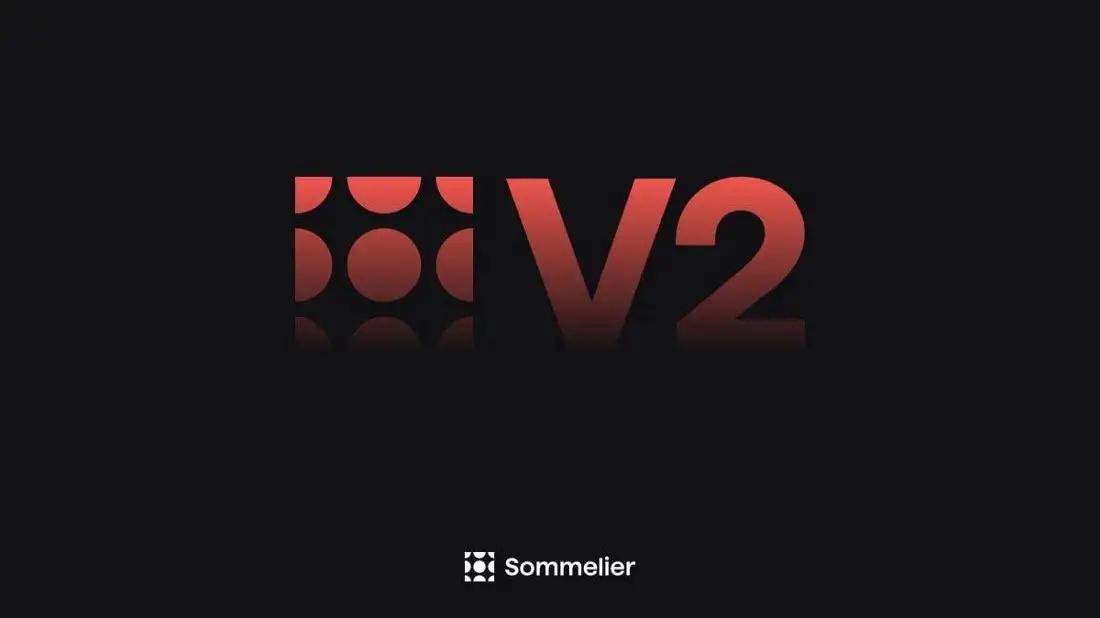
Sommelier Upgrades Cellar Architecture to Enable the Most Powerful DeFi Strategies in the Market

Real Yield USD is Coming to Maximize Stablecoin Yield

Retrospective on 2022 and the Journey Ahead

FAQ - Patache Digital’s Steady Strategies
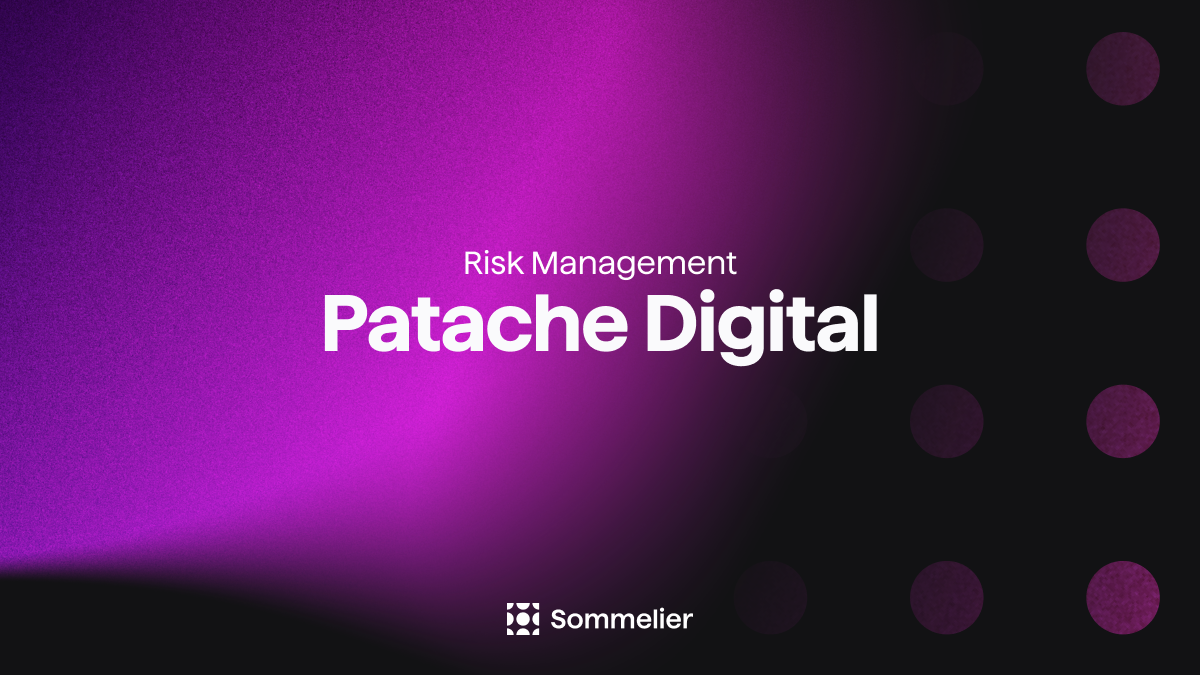
Patache Digital: Risk Management Discussion

Strategy Deep Dive: Patache Digital
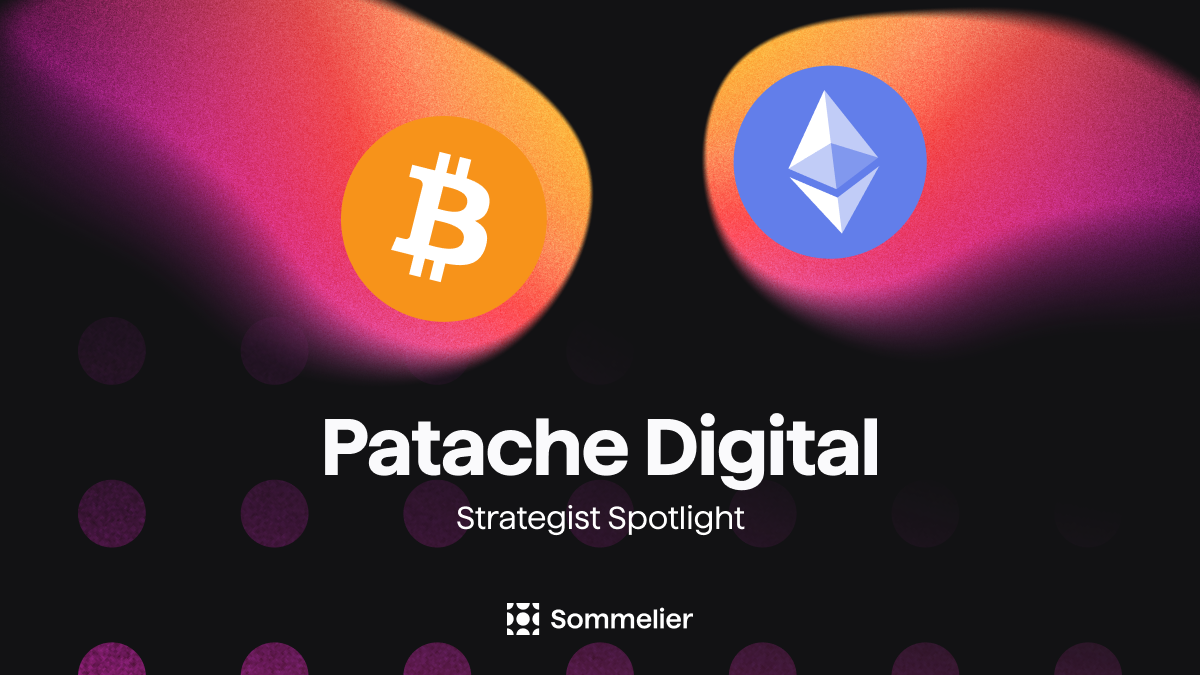
Strategy Provider Spotlight: Patache Digital
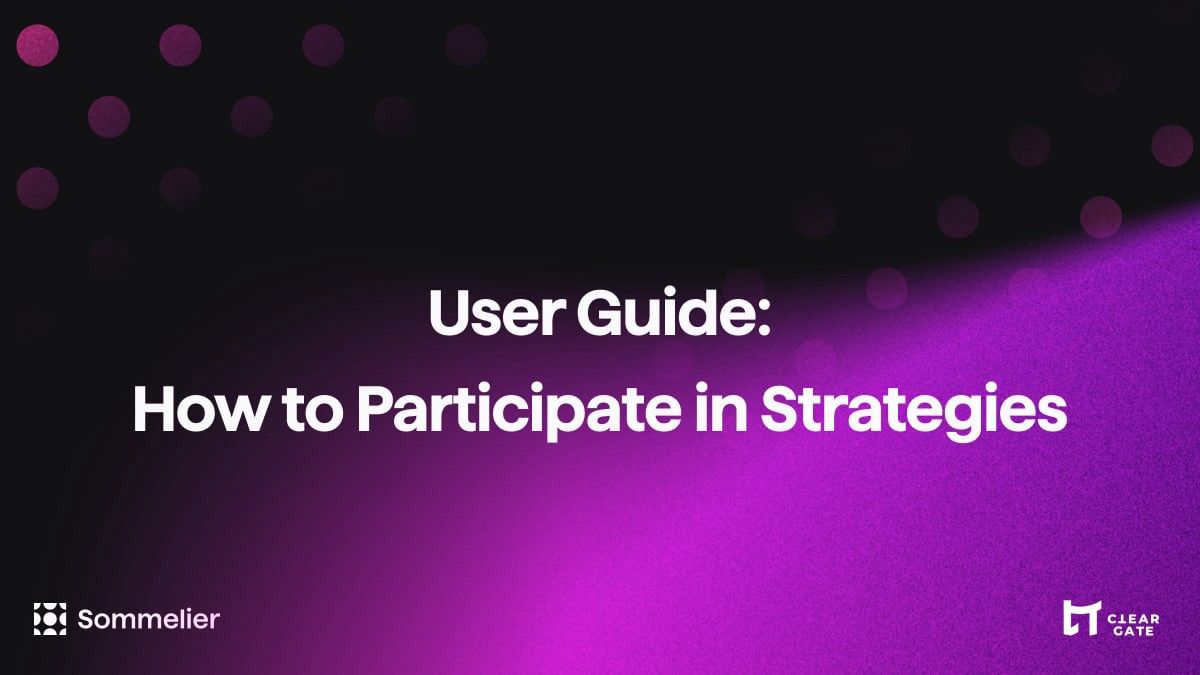
User Guide: How to Participate in Strategies on Sommelier

Sommelier Ambassador Program
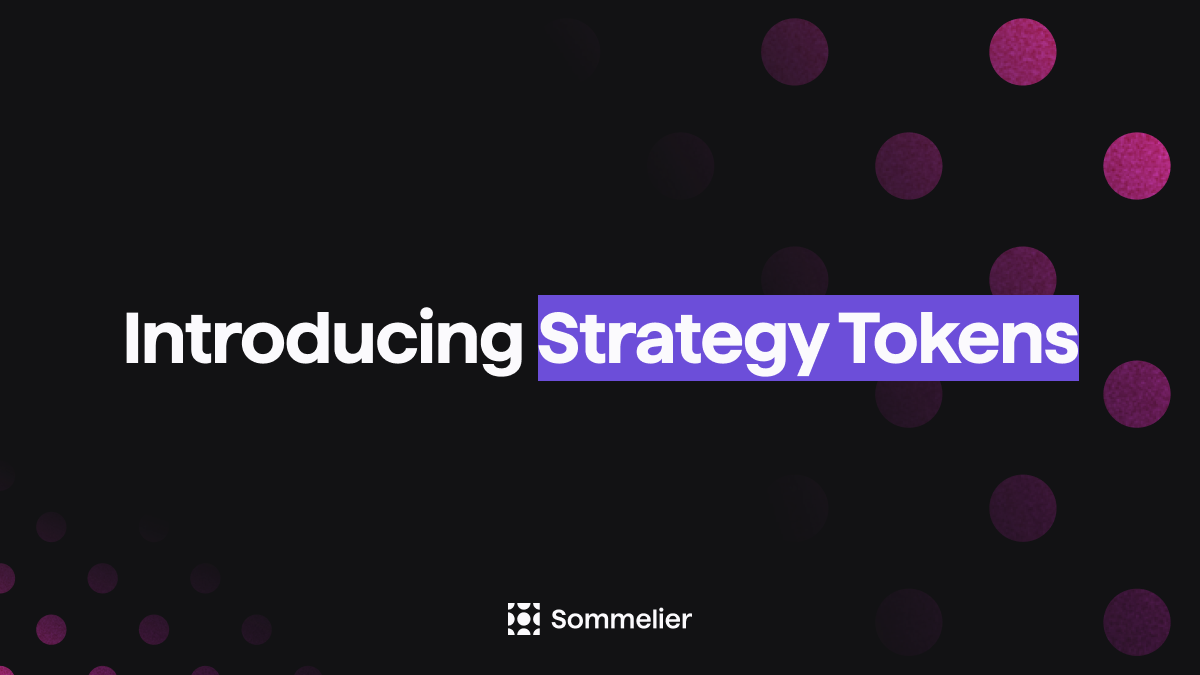
Strategy Tokens: What Are They and How Do They Work?

6 Core Principles of Sommelier
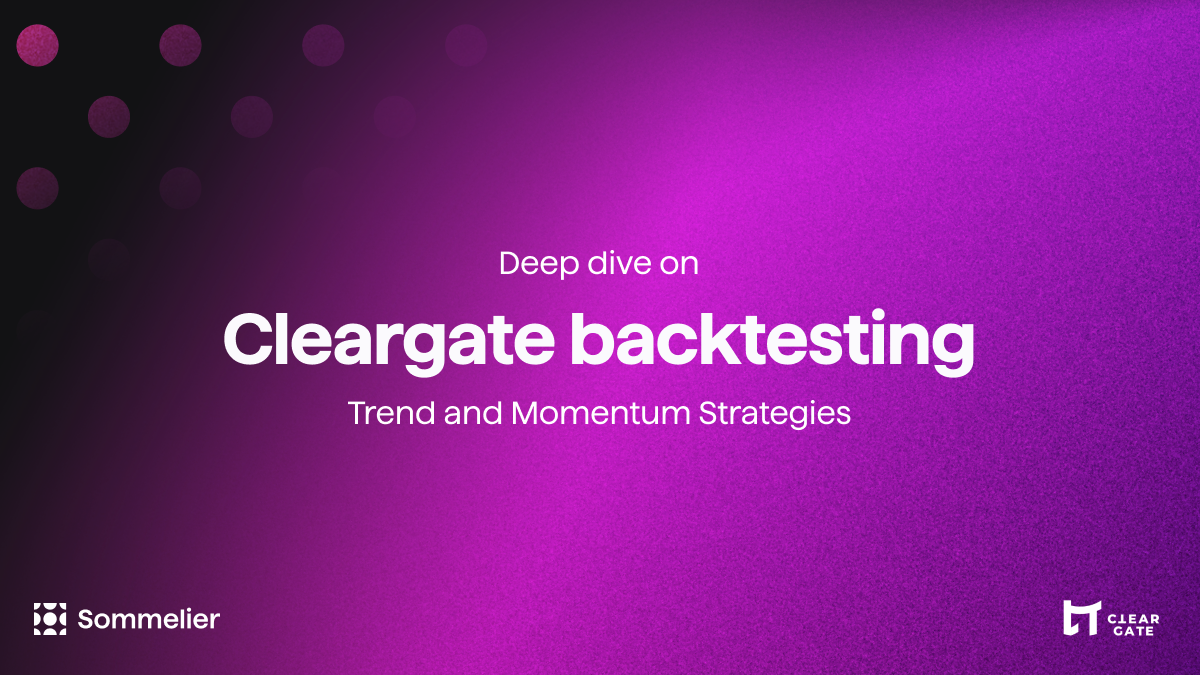
10/10/22 - Deep Dive on Cleargate Backtesting

Strategy Provider Spotlight: Seven Seas

Deep Dive on Trend and Momentum Strategies

Strategy Provider Spotlight: ClearGate

Supporting Strategy Providers on Sommelier
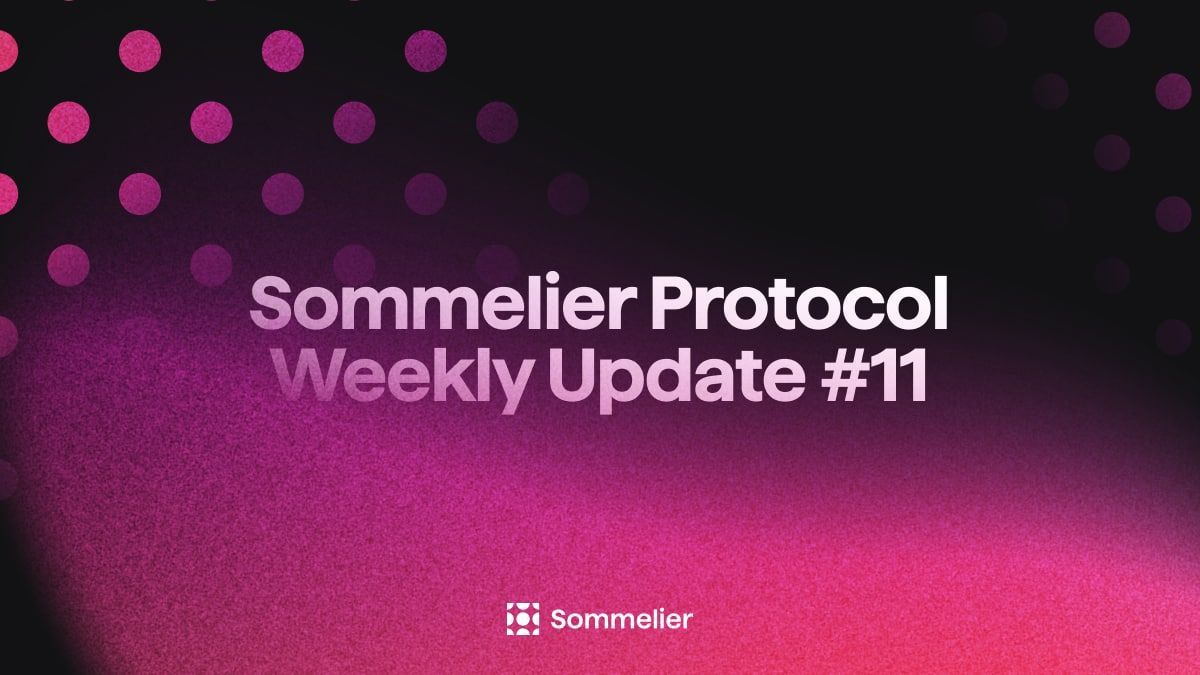
Sommelier Protocol Team Weekly Update #11
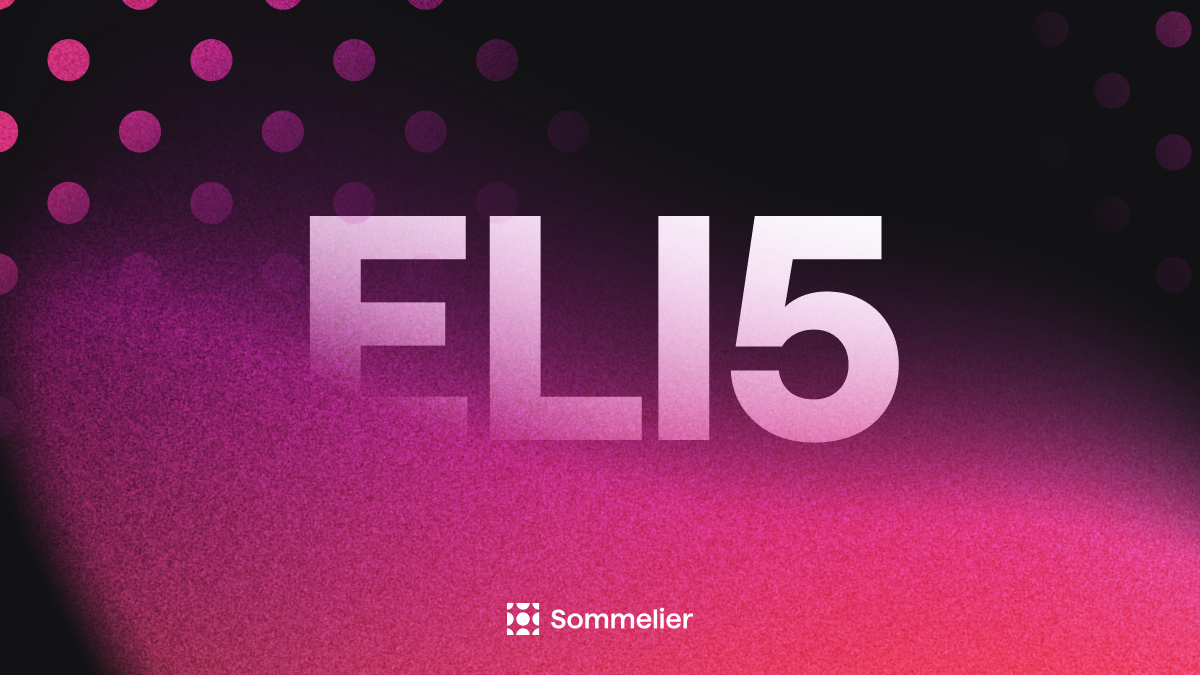
ELI-5 Explanation of the Data Science behind Sommelier’s First Aave Cellar

Sommelier Protocol Team Weekly Update #10
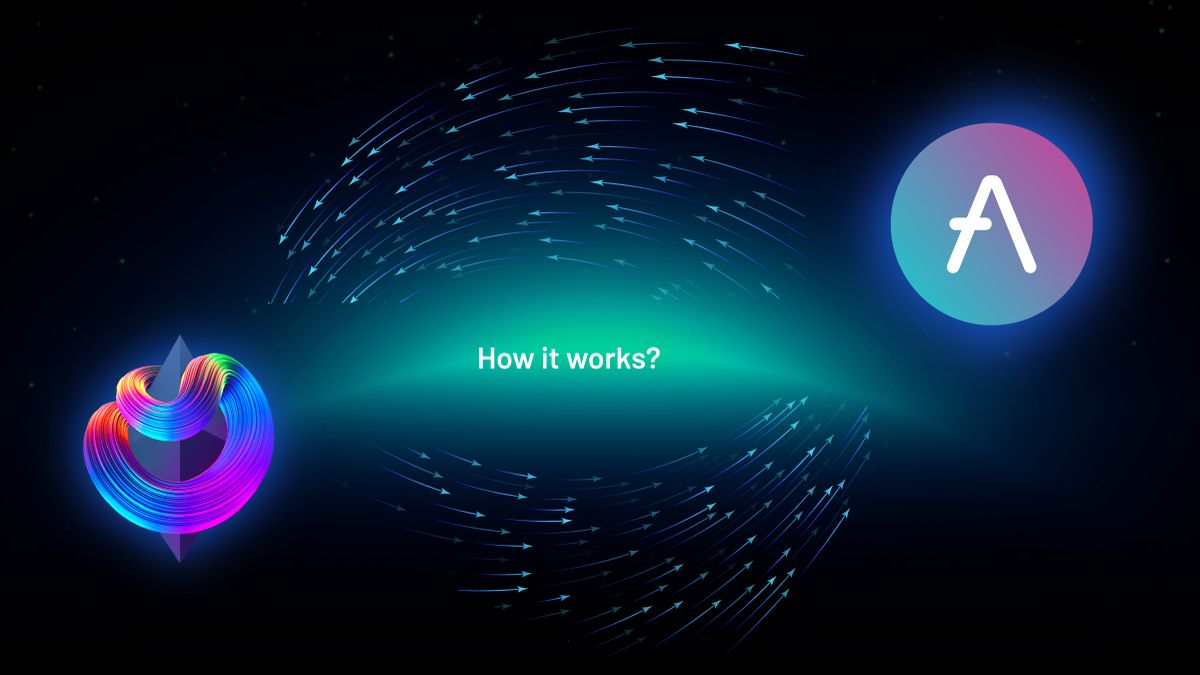
The Data Science Behind Sommelier’s First Aave Cellar
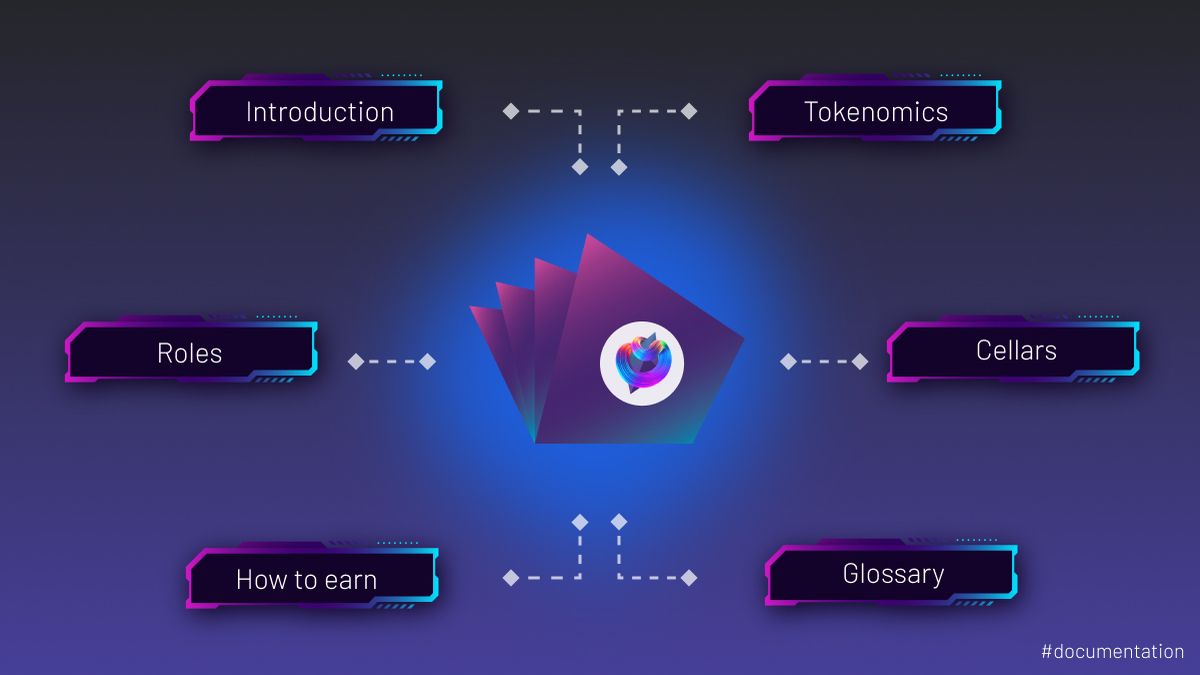
Sommelier Protocol Design Documents

Sommelier Protocol Team Weekly Update #9

Sommelier Protocol Team Weekly Update #8

Sommelier Protocol Team Weekly Update #7

Twitter Spaces With Sommelier: How to Launch a Cellar on Sommelier

Twitter Spaces With Sommelier: Protocol Upgrade and Community Update

Sommelier Protocol Team Weekly Update #4
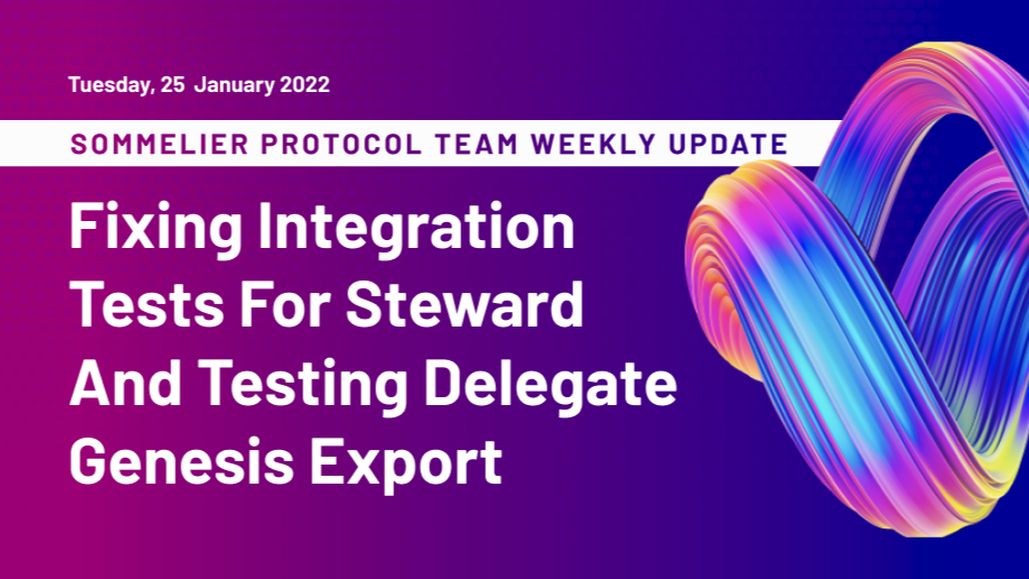
Sommelier Protocol Team Weekly Update #6

Twitter Spaces With Sommelier: SOMM Airdrop Proposal Data Analysis

Twitter Spaces With Sommelier: Community Update on the First Cellars to Launch
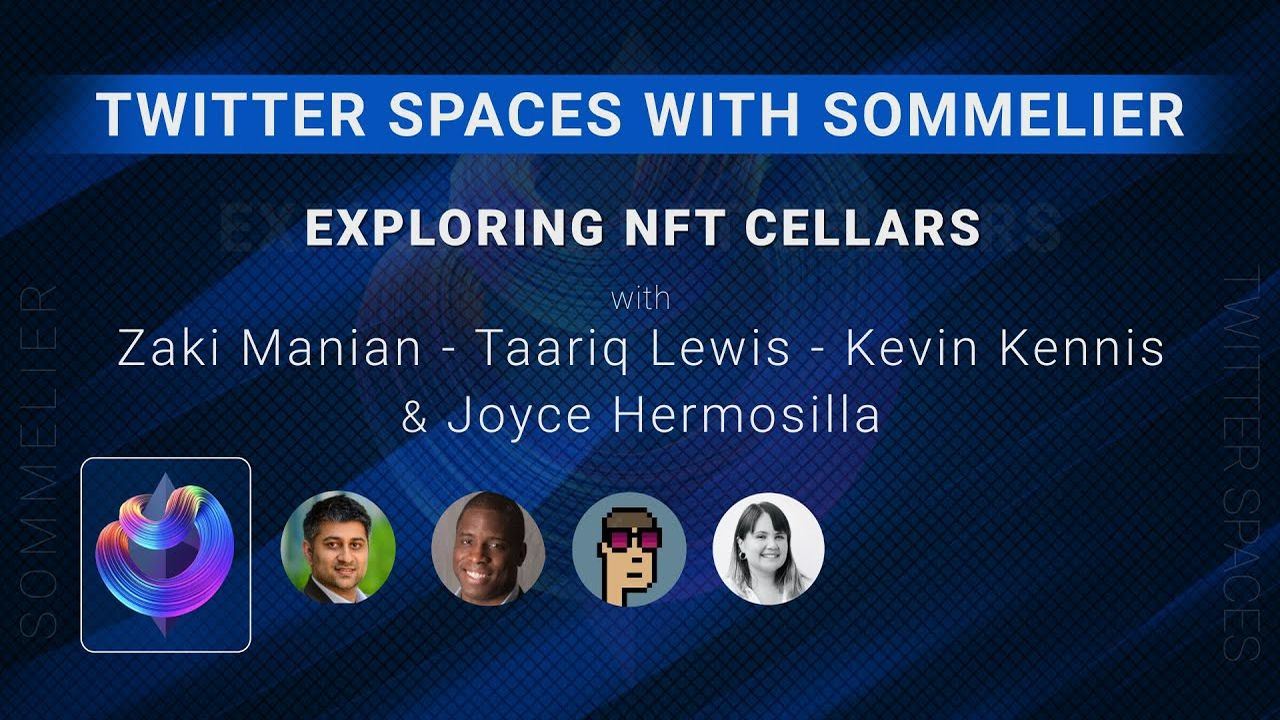
Twitter Spaces With Sommelier: Exploring NFT Cellars

Sommelier Protocol Team Weekly Update #1
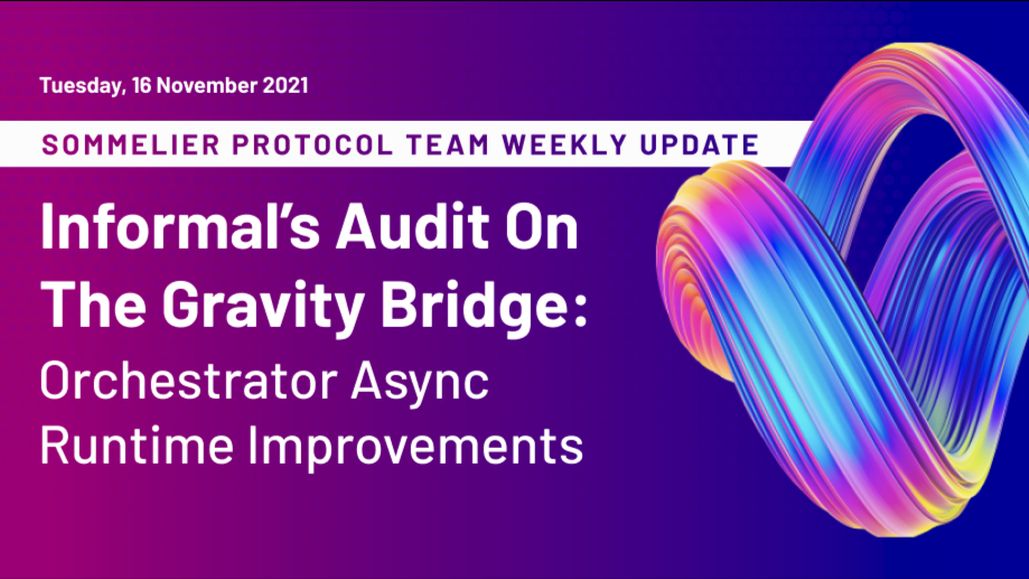
Sommelier Protocol Team Weekly Update #2
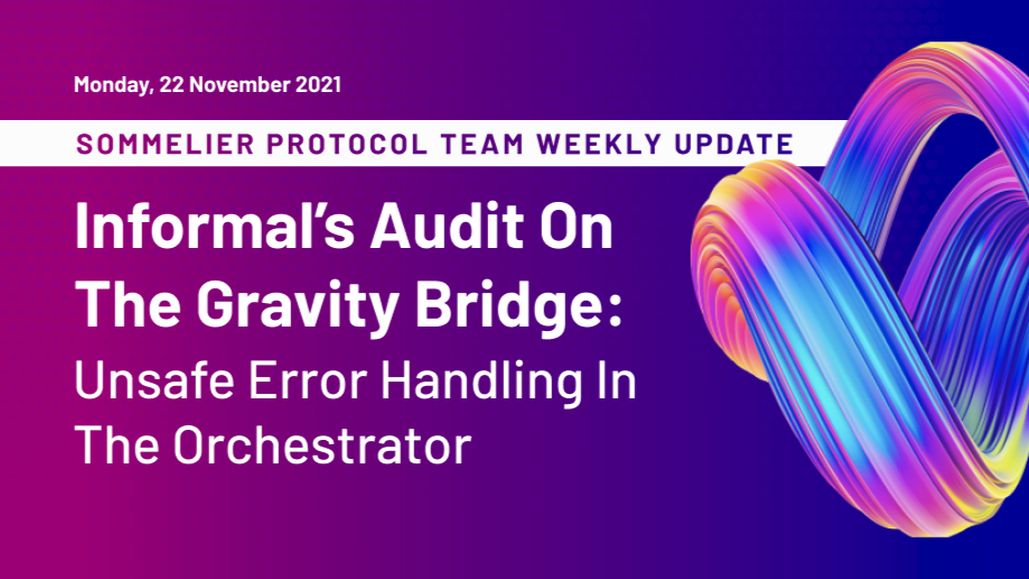
Sommelier Protocol Team Weekly Update #3

Three Things You Need to Know About Sommelier Governance This Week
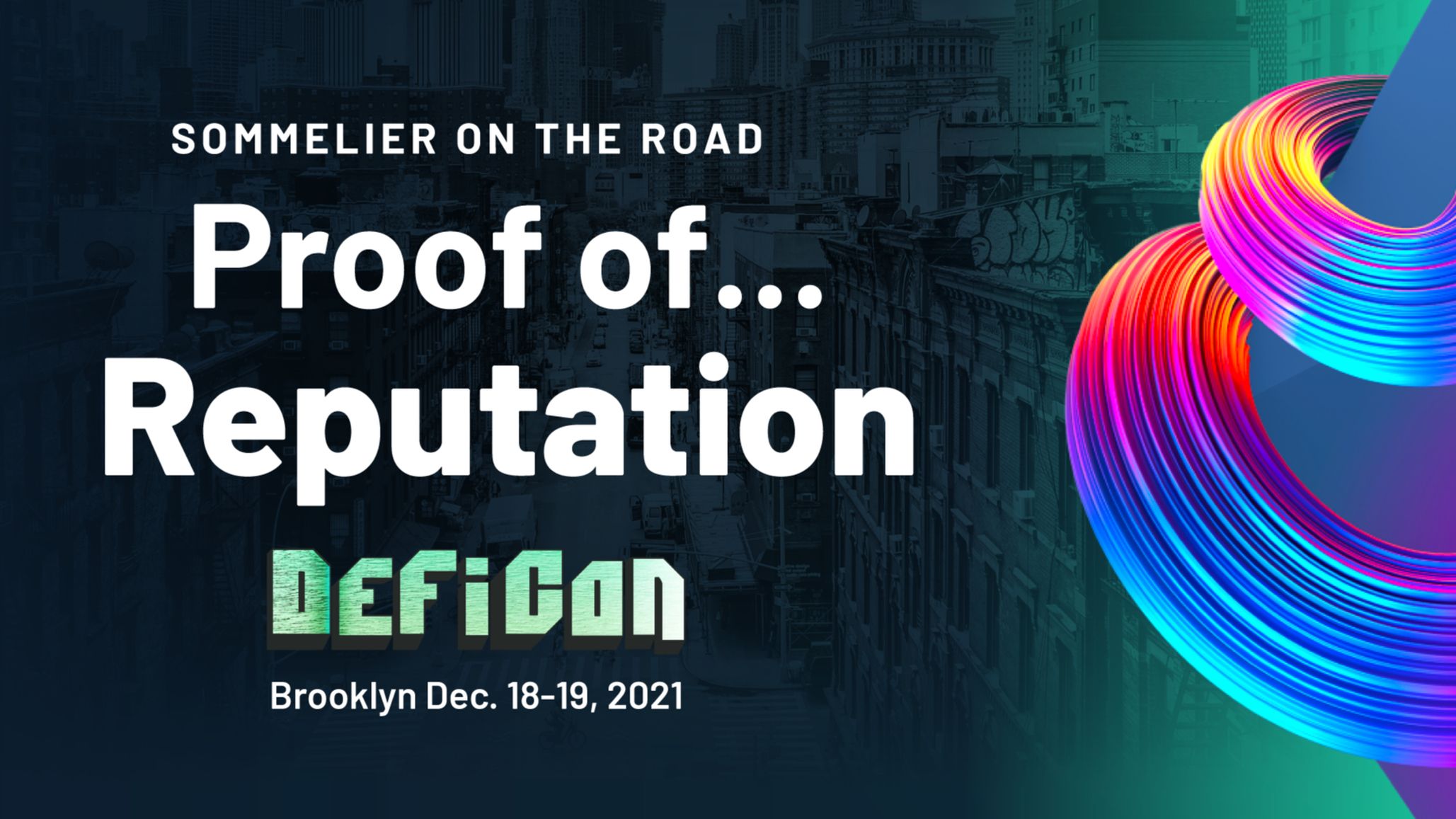
Sommelier On the Road: PROOF OF…REPUTATION
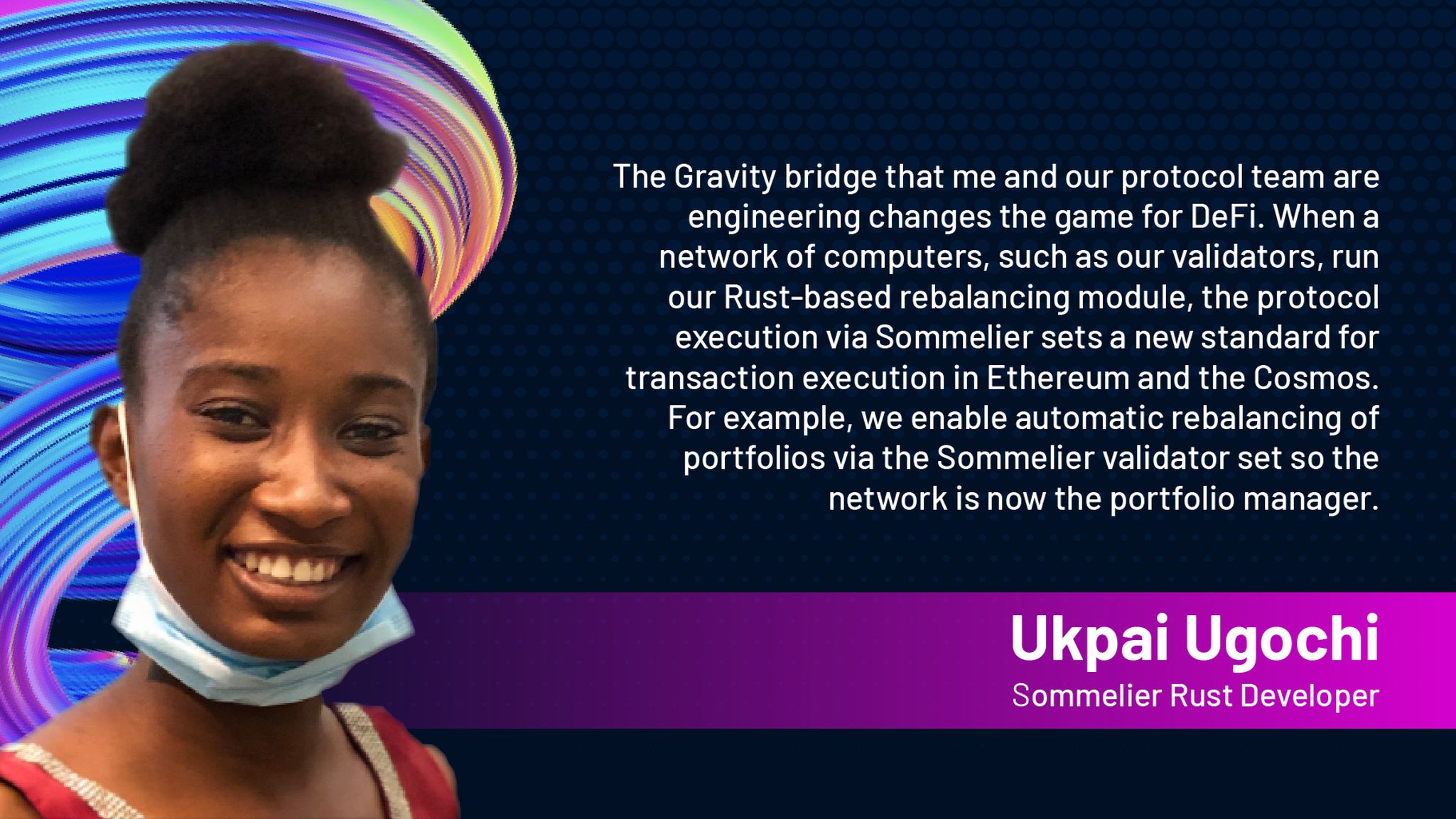
Introducing Ukpai Ugochi - Working on The Sommelier Cellars Rebalancer
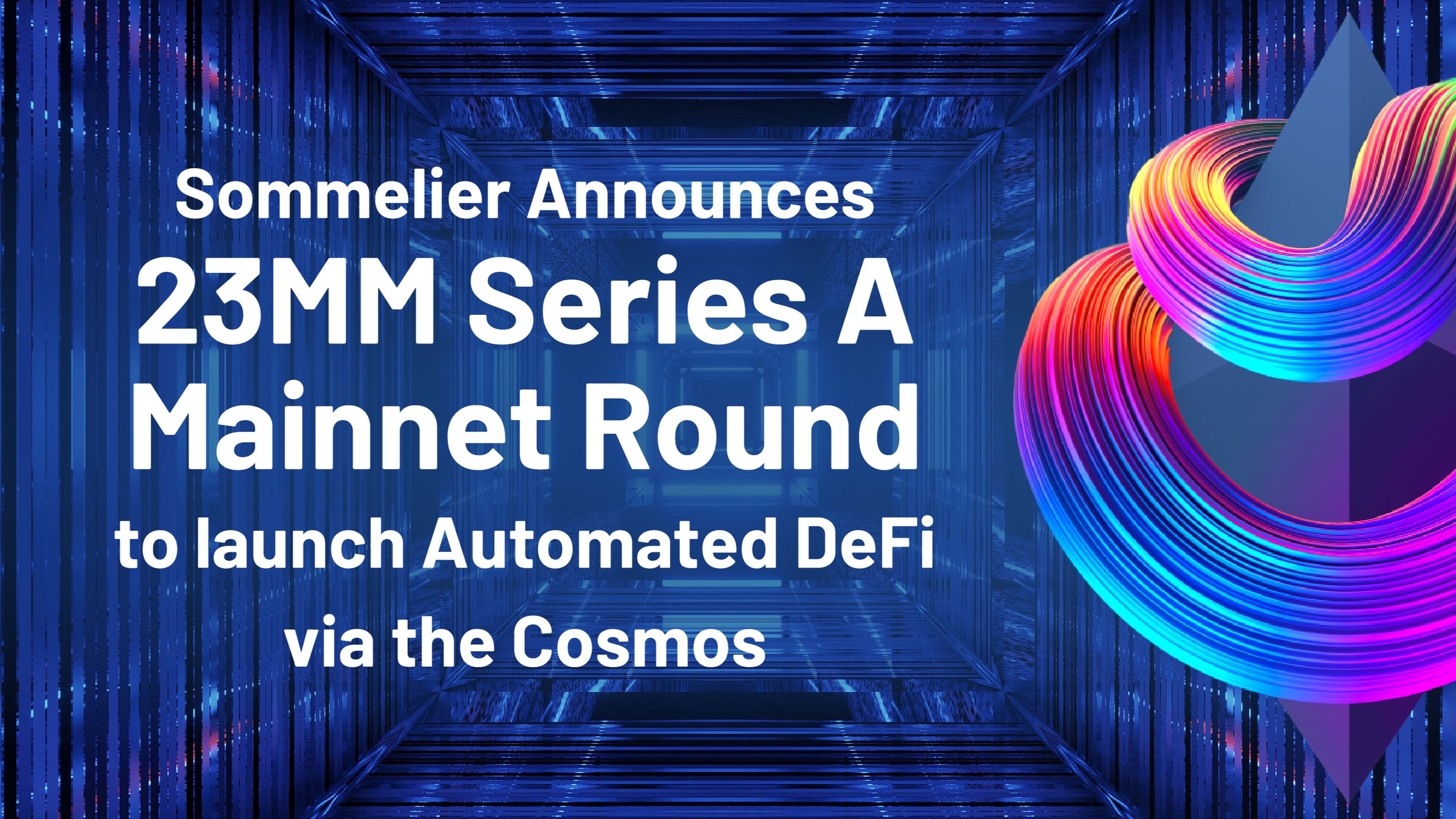
Sommelier Announces 23MM Series A Mainnet Round to launch Automated DeFi via the Cosmos
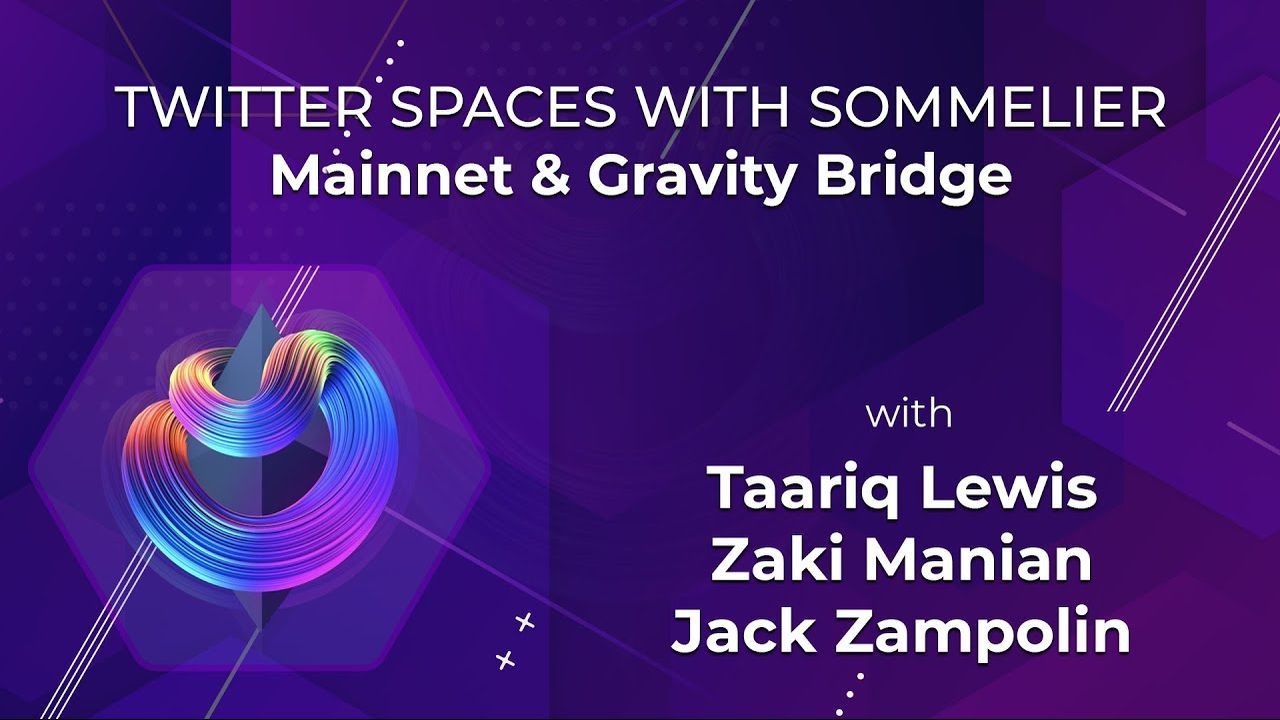
Twitter Spaces With Sommelier: Mainnet Launch & Gravity Bridge
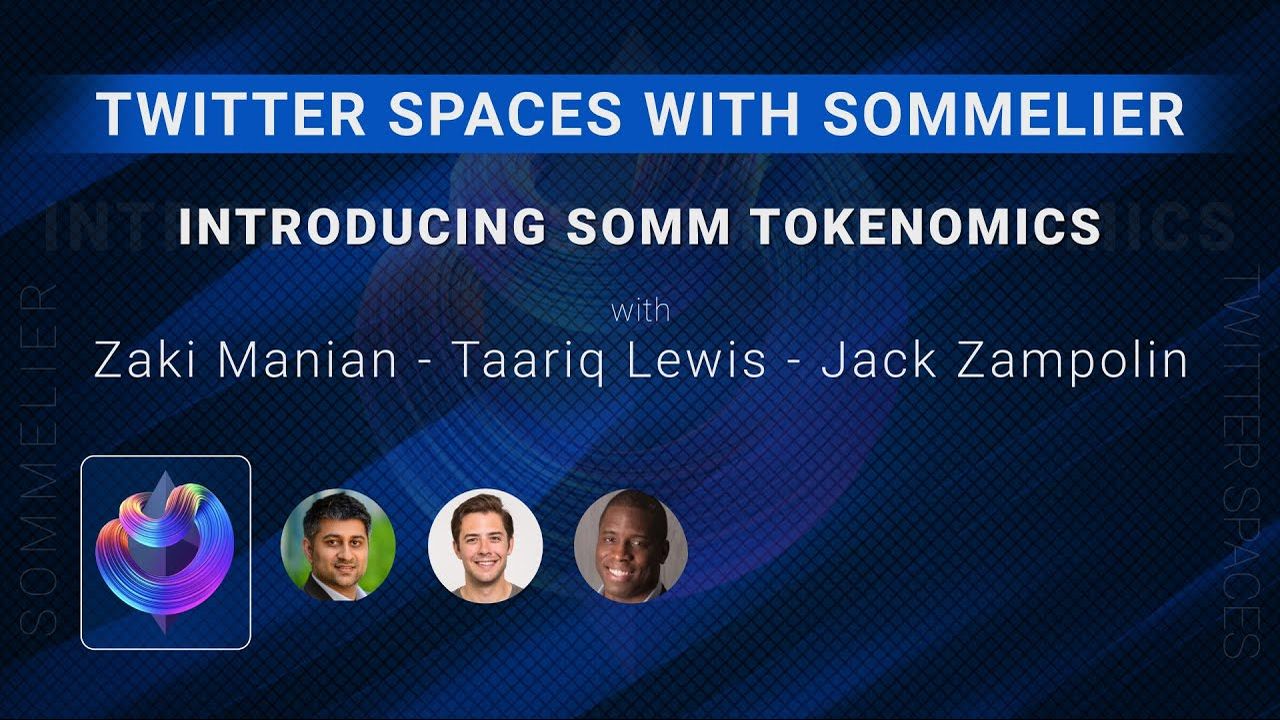
Twitter Spaces With Sommelier: Introducing SOMM Tokenomics

Twitter Spaces With Sommelier: Mysten Labs AMA With Evan Cheng

Introducing SIPS and Sommelier’s Governance Structure

Twitter Spaces With Sommelier: End of Year AMA 2021

Twitter Spaces With Sommelier: Intro to SIPS & Lisbon Blockchain Week
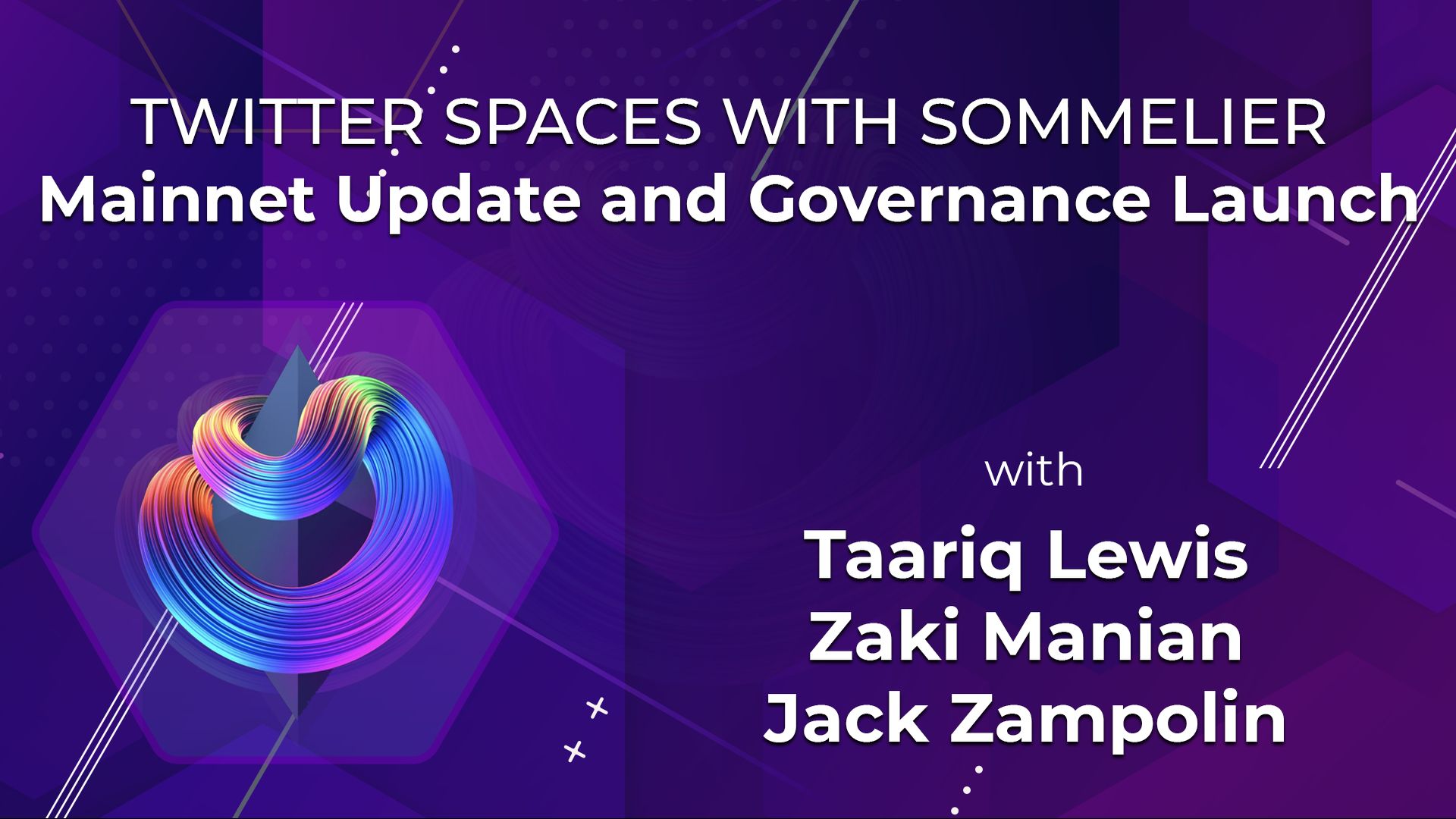
Twitter Spaces With the Sommeliers: Mainnet Update and Governance Launch

Sommelier Partners With Mysten Labs to Make Sommelier and All Cosmos Blockchains the Fastest Protocols on the Planet

Twitter Spaces With the Sommeliers: Sushi AMA With Joseph Delong
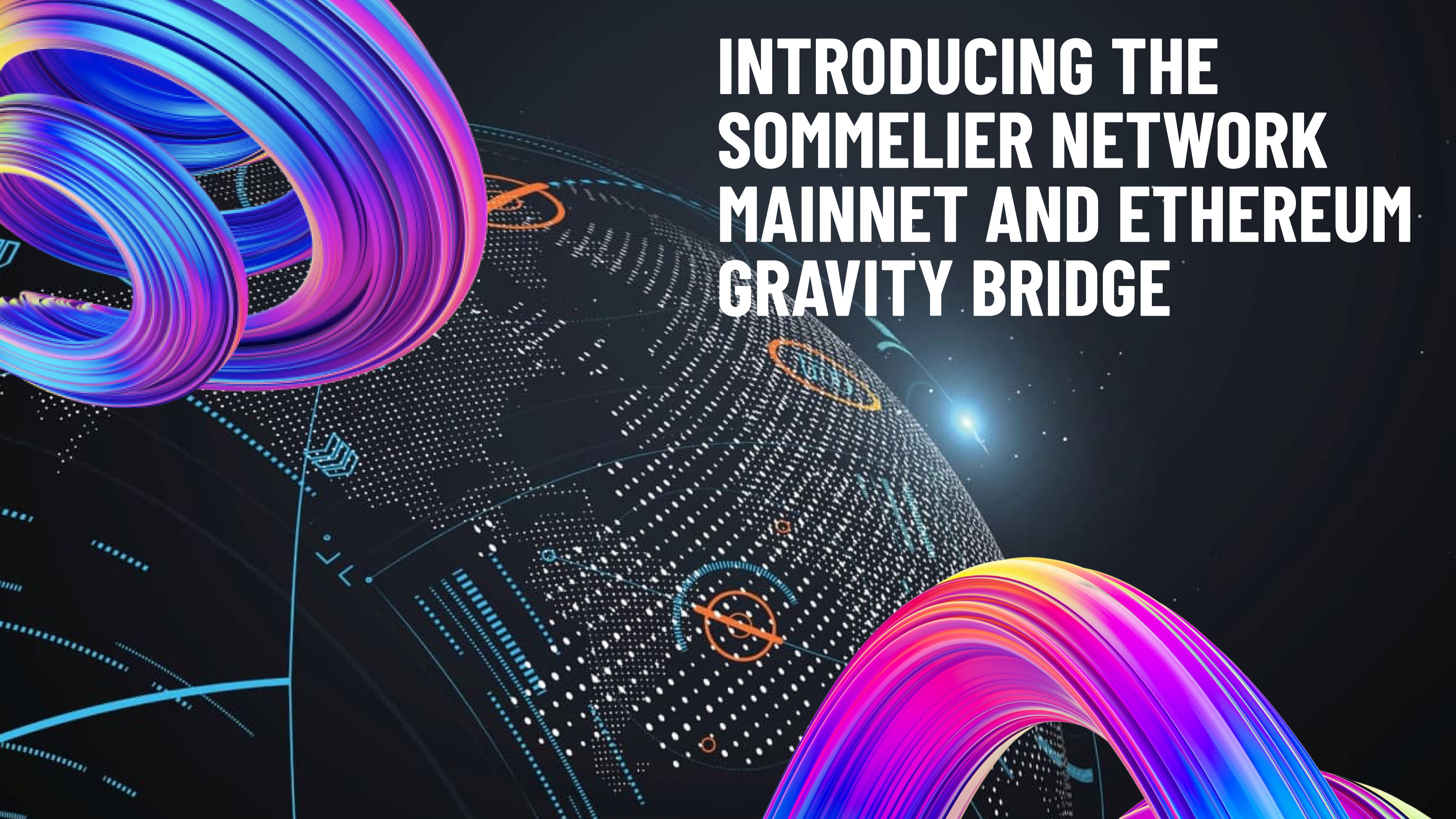
Introducing the Sommelier Network Mainnet and Ethereum Gravity Bridge
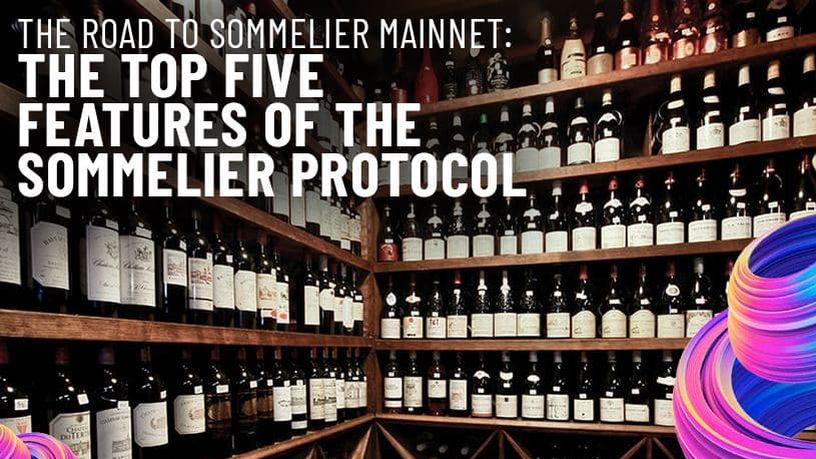
The Top Five Features of the Sommelier Protocol

Call for Validators: The Two Step Process for 2021

Two New Features Launched to Test Liquidity Management on Uniswap v3

Uniswap v3 Remove Smart Contract Incident Post Mortem for Sommelier
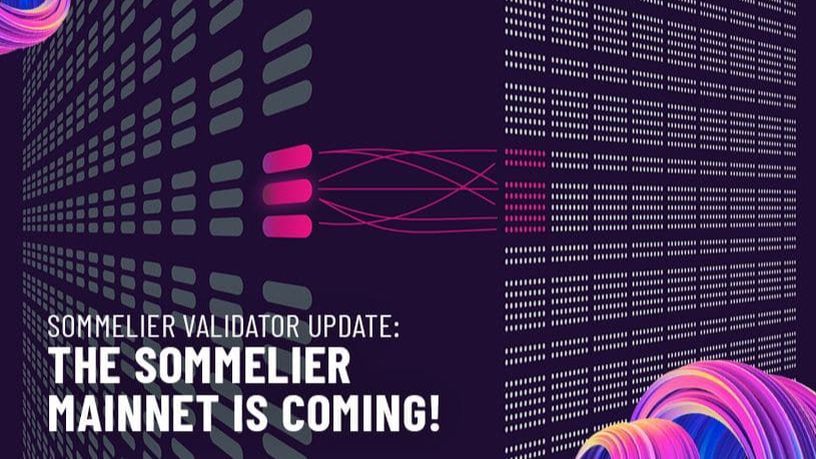
Call for Validators: Road to Sommelier Mainnet

Sommelier Liquidity AMA With Yenwen and Nick From Perpetual Protocol
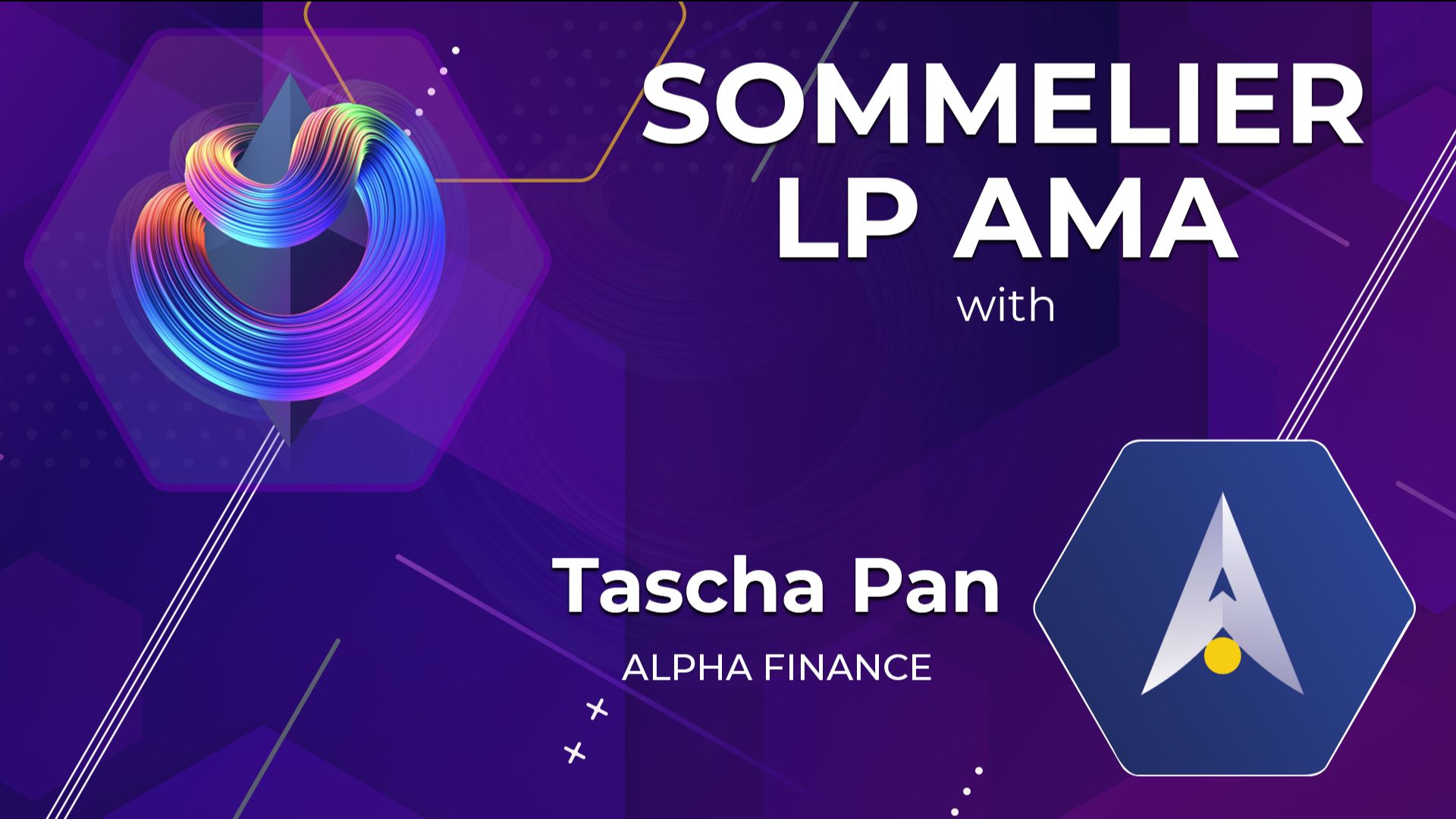
Sommelier Liquidity AMA With Tascha Pan From Alpha Finance
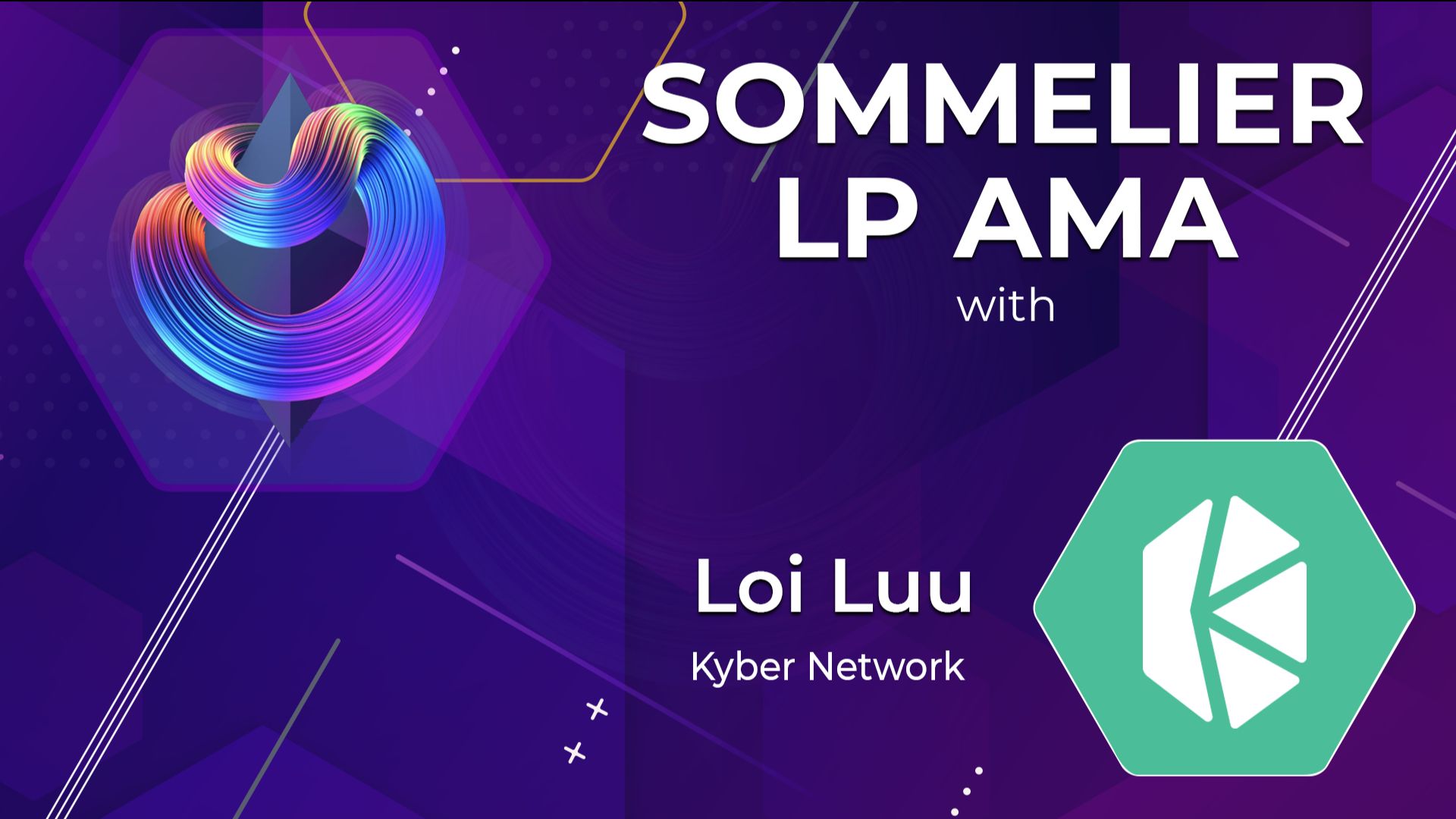
Sommelier Liquidity AMA With Loi Luu From Kyber Network

Sommelier Liquidity AMA With Alex From Peanut

Sommelier Liquidity AMA With JP From THORChain

Sommelier Liquidity AMA With Alan Chiu From OMGX Network

Sommelier Liquidity AMA With Ari From Gelato Network

Sommelier Liquidity AMA With Sunny Aggarwal From Osmosis

A Fine Sommelier Explanation of Bollinger Bands With Kevin Kennis

Sommelier Liquidity AMA With Mona El Isa From Enzyme

Sommelier Liquidity AMA With Haxor From Method Finance

Sommelier Liquidity AMA With Tor From Secret Network
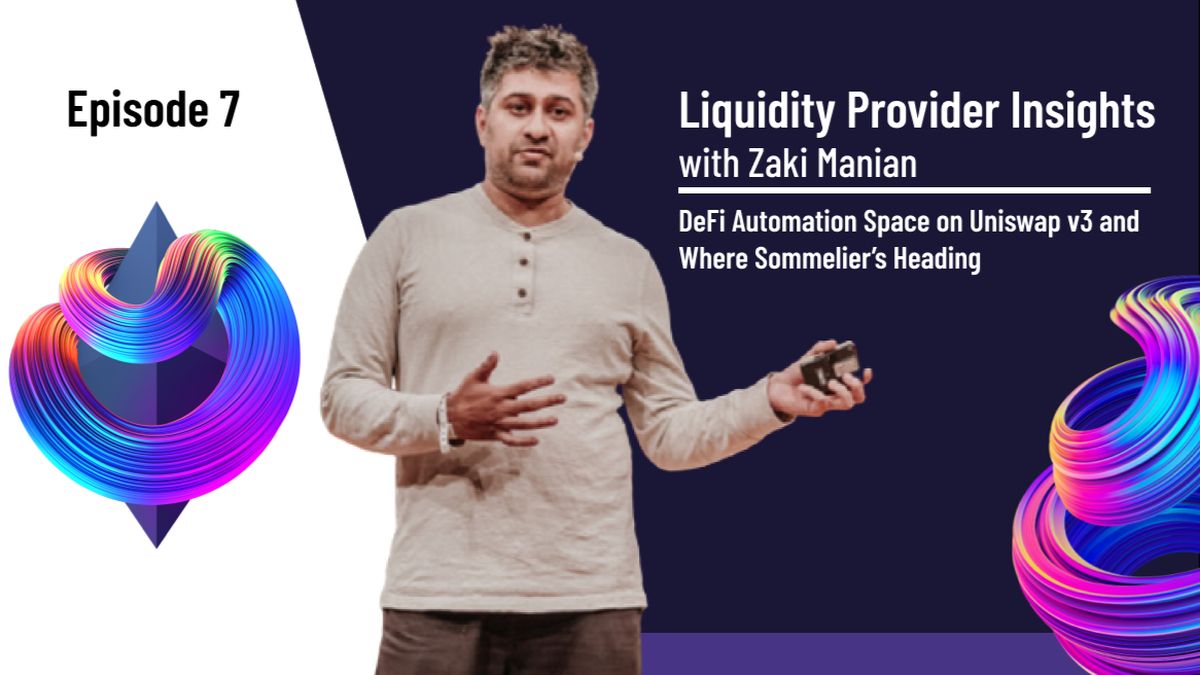
Liquidity Provider Insights With Zaki Manian - Ep. 7 - DeFi Automation Space on Uniswap v3 and Where Sommelier’s Heading
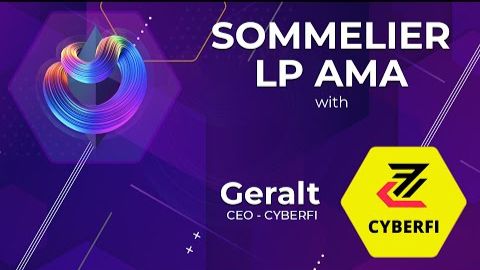
Sommelier Liquidity AMA With Geralt From CyberFi

A Pairings Tutorial of Two Sided Liquidity Addition with Sommelier

Liquidity Provider Insights with Zaki Manian - Ep. 6 - Liquidity Providers Need to Gear Up for a Multi-Chain World

Three New Summer Features for Liquidity Providers

Sommelier Liquidity AMA with Tom C and Max W from Charm

Sommelier Liquidity AMA with Dereek69 & Shalaquiana from BIOPset

Sommelier This Week - June 3rd 2021: The Road to Mainnet
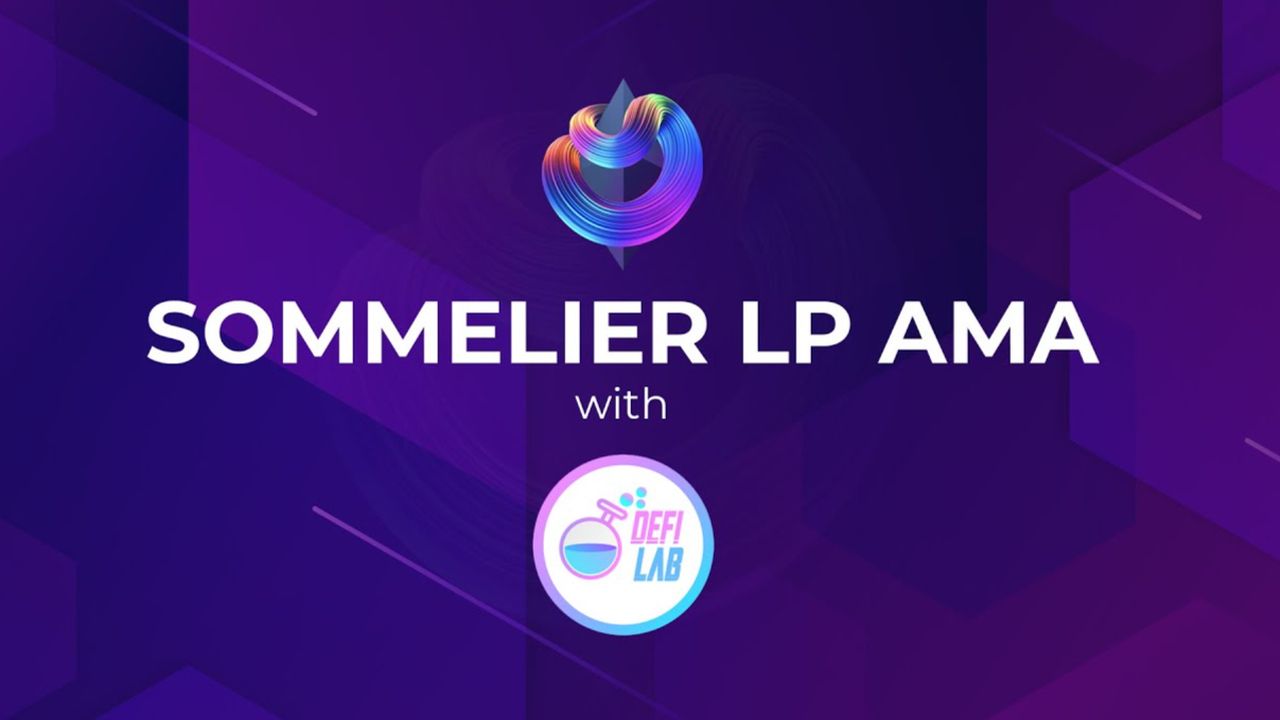
Sommelier Liquidity AMA with Federico Landini from DefiLab

Sommelier Liquidity AMA with Michael Egorov from Curve

Liquidity Provider Insights with Zaki Manian - Ep. 5 - A Bright Light at the End of a Long, Tough Weekend for Bitcoin

Sommelier This Week - May 27th 2021: What Aspiring Sommelier Validators Need to Know on Last Week’s Protocol and App Progress

Liquidity Provider Insights with Zaki Manian (Special Edition) - Ep. 4 - New Pairings Release

Sommelier R&D AMA With Yaniv Tal From the Graph

Sommelier Liquidity AMA with MacLane Wilkison from NuCypher

The Eight Steps to Become a Liquidity Provider with Pairings

Sommelier NFT Awards - May 18th, 2021
Pairings By Sommelier: The FAQ

Zaki Manian Breaks Down What Liquidity Providers Need to Know Under Uniswap v3

Sommelier This Week - May 6th 2021: How This Week’s Protocol and App Progress Weaves Together to Make a Product
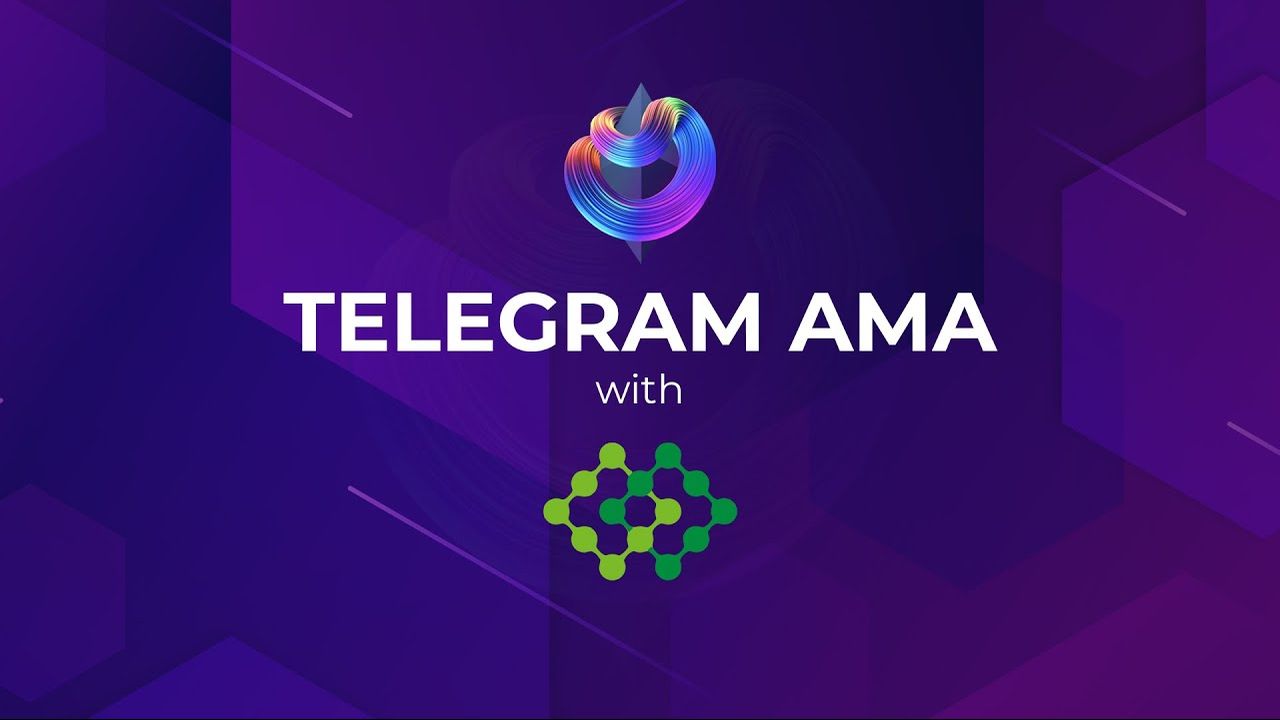
Sommelier Liquidity AMA with Dan Thomson from InsurAce

Sommelier This Week - April 29th 2021: Weeks Away From a Taste of the Sommelier App Experience and How the Dev Team Stays on Track
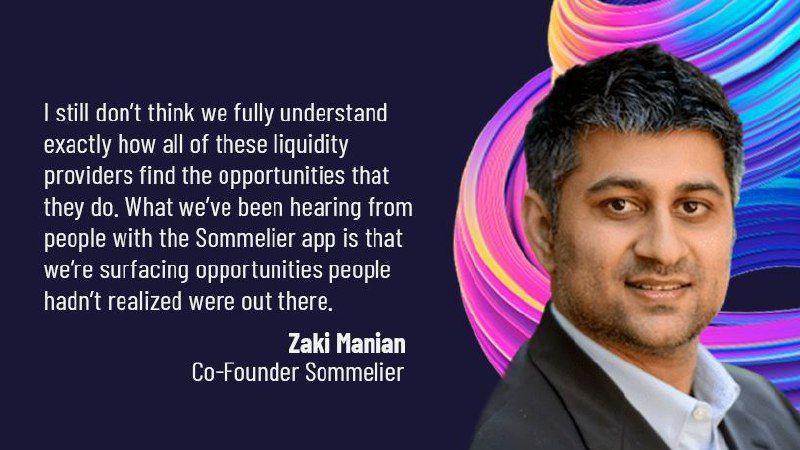
Zaki Manian Breaks Down a Phase Change Liquidity Providers Need to Know About Automated Market Makers

Introducing Jehan Tremback: Sommelier Core Developer and Althea Co-Founder that pushes the Limits of the Blockchain Bridge with Gravity

Sommelier This Week - April 22nd 2021: An Inside Look at Progress on Coordinating Sommelier Components That Contribute to the Chain

Sommelier This Week - April 15th 2021: Providing a Best-in-Class Experience for Uniswap Liquidity Providers

Sommelier Announces $1M R&D Grant from The Graph Foundation

Introducing LP Rewards: This Week With Cellframe

Introducing Deborah Simpier: Althea CEO and Sommelier Co-Founder Who Brought the Gravity Bridge to Life in The Cosmos

Sommelier This Week - April 8th 2021: What Uniswap v3 Means For Sommelier Architecture and Validators

Introducing Sommelier LP Rewards Program

Sommelier This Week - April 1st 2021: Gravity Bridge and Private Testnets

Blockchain startup decides to acquire a California winery and host NFT wine parties
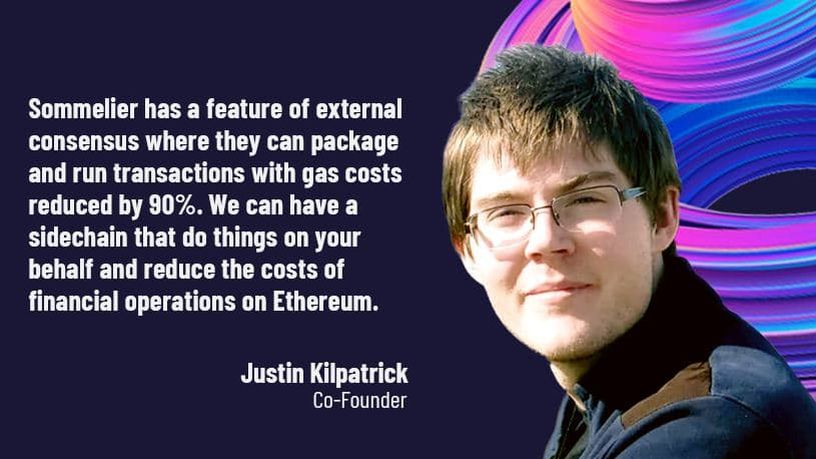
Introducing Justin Kilpatrick: The Blockchain Bridge Wizard Who Maintains Gravity

Five Ways UniswapV3 changes the world for Liquidity Providers on the AMM
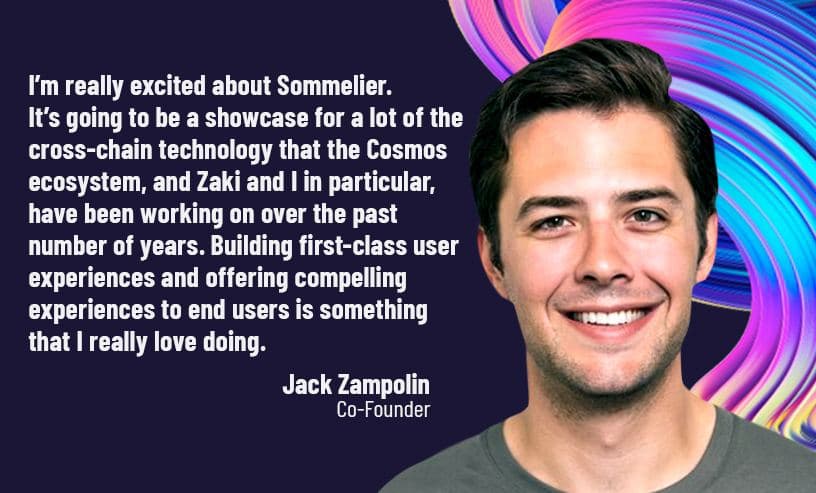
Introducing Jack Zampolin: On Becoming A Sommelier in The Cosmos
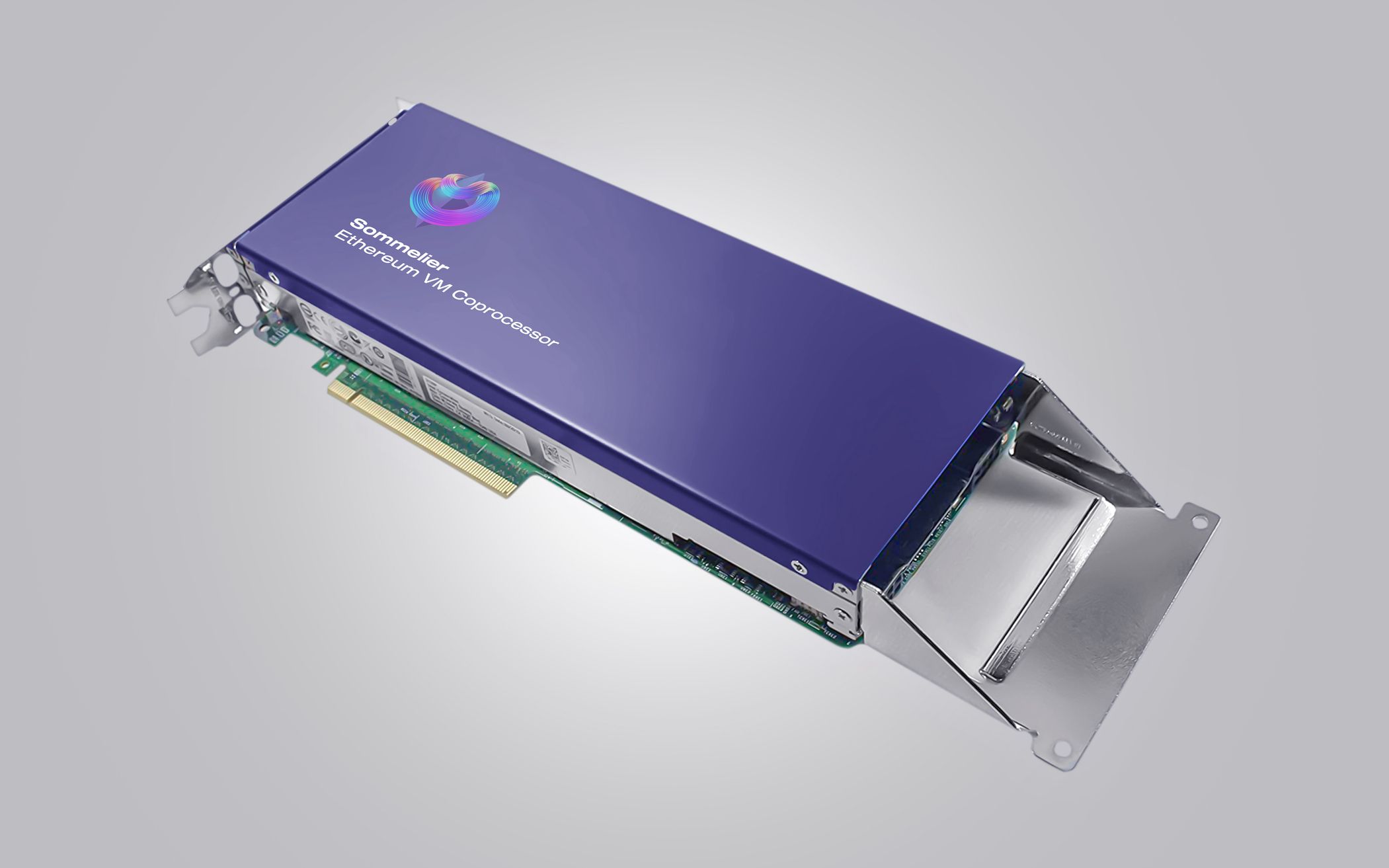
Sommelier: Welcome To The New CoProcessor For Ethereum
© 2025 Somm by Bajanss OÜ –Maakri 36-50, Tallinn, Estonia 10145